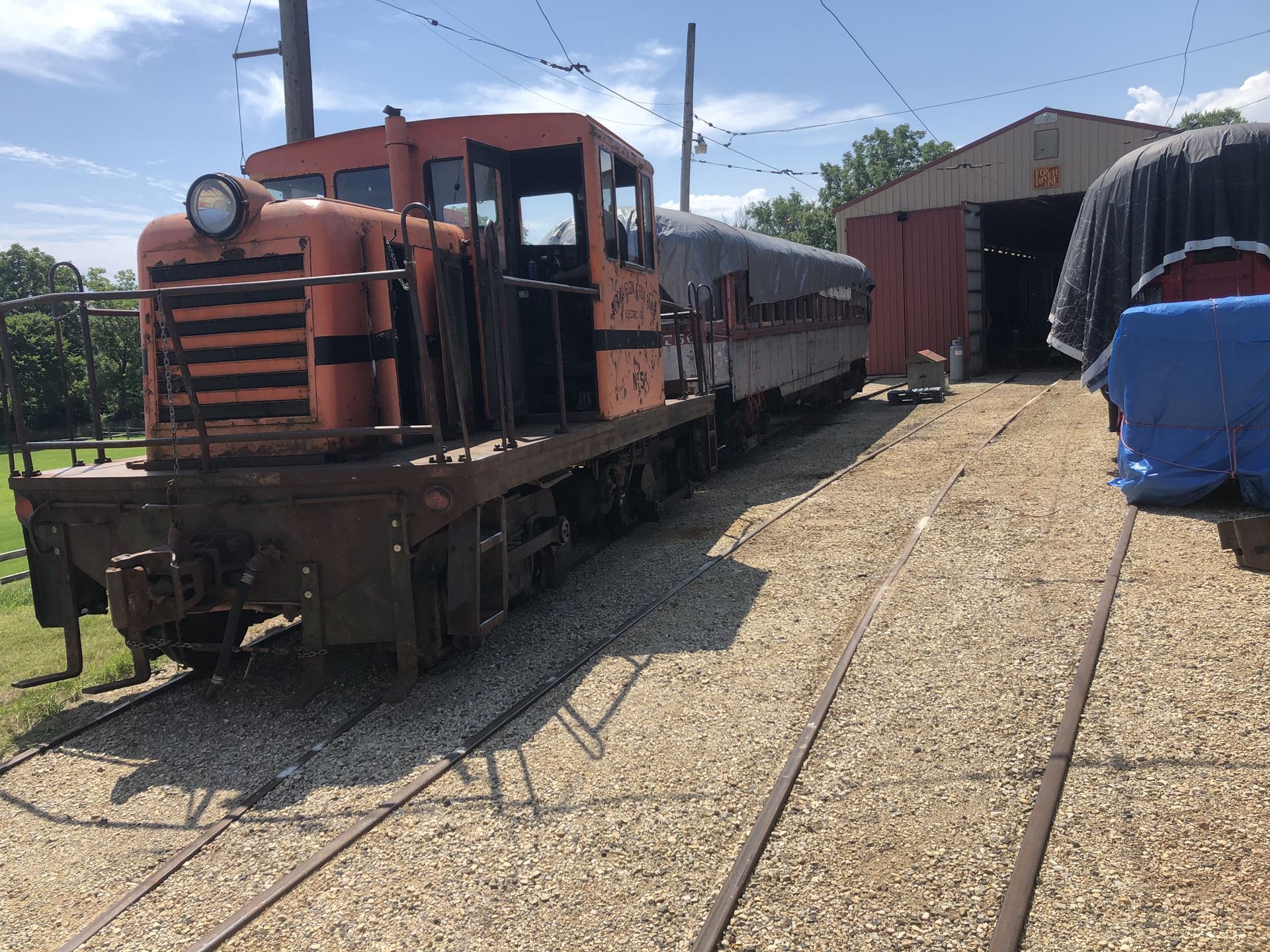
Locomotive 5 is pulling CNS&M 756 off of Track 5 for a run around trip to Coleman Yard so it can be pushed on Track 0 for storage along with CA&E 317. Mike Gilles photo
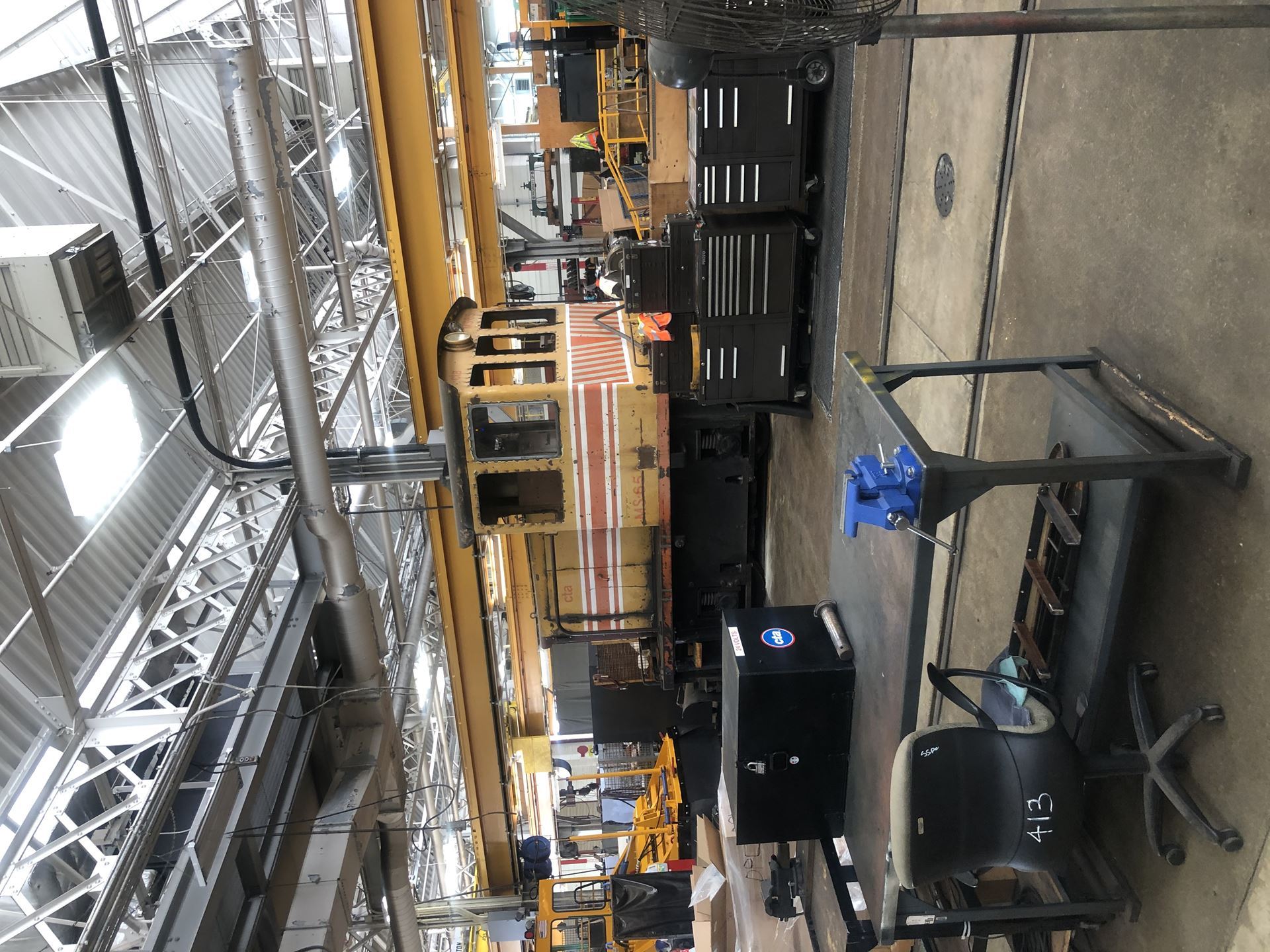
This is a view CTA GE 25-ton locomotive MS-65 is sitting unused and surplus at Skokie Shops on the day Jeff Bennett and Fred Lonnes inspected the locomotive. Jeff Bennett photo
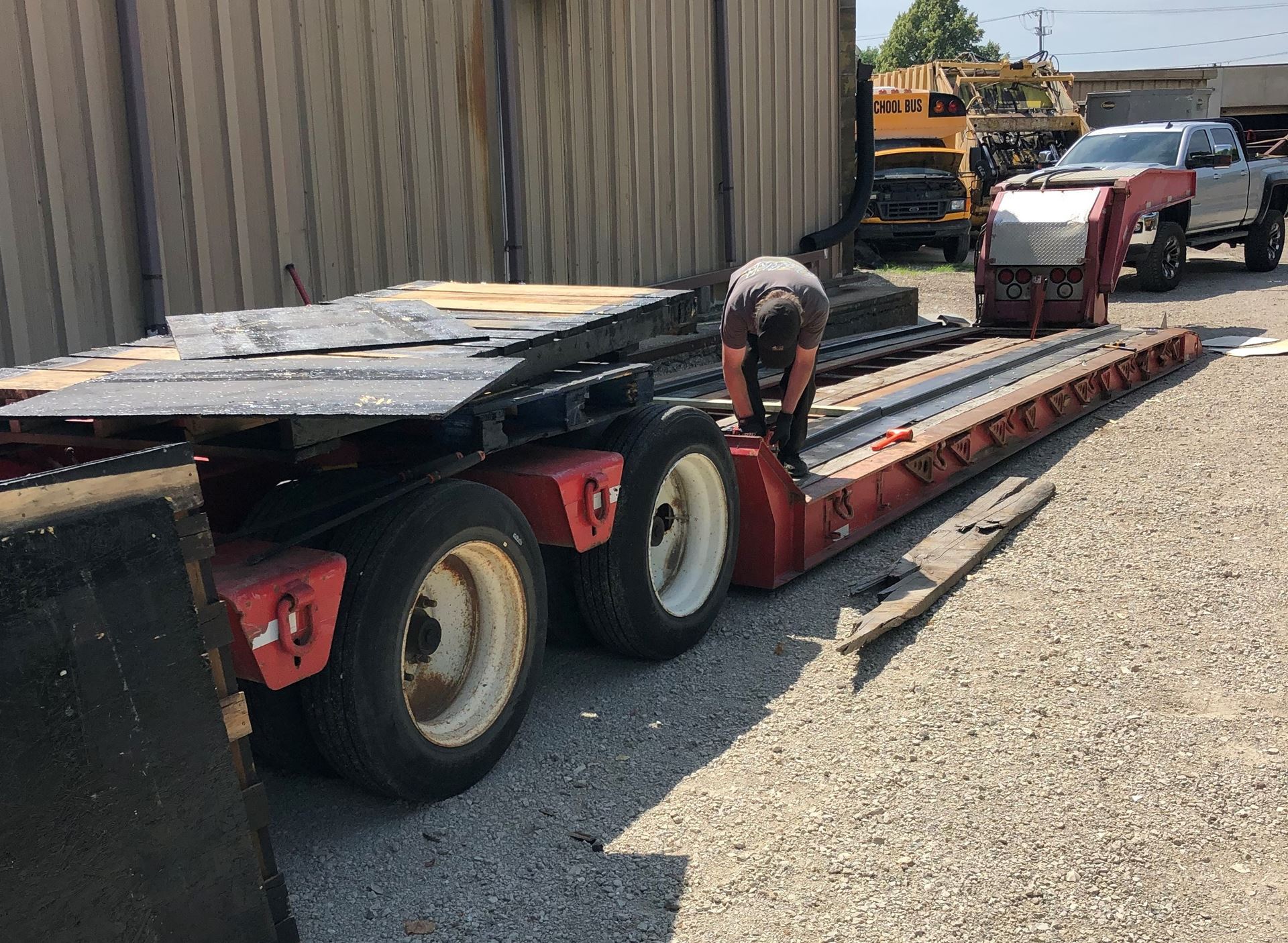
Jeff’s company has a low boy trailer that could hold the locomotive so he had his employee Gerrick add rails made of large steel angle plates reinforced with wooden 2 x 4’s underneath to hold the shape. Jeff Bennet photo
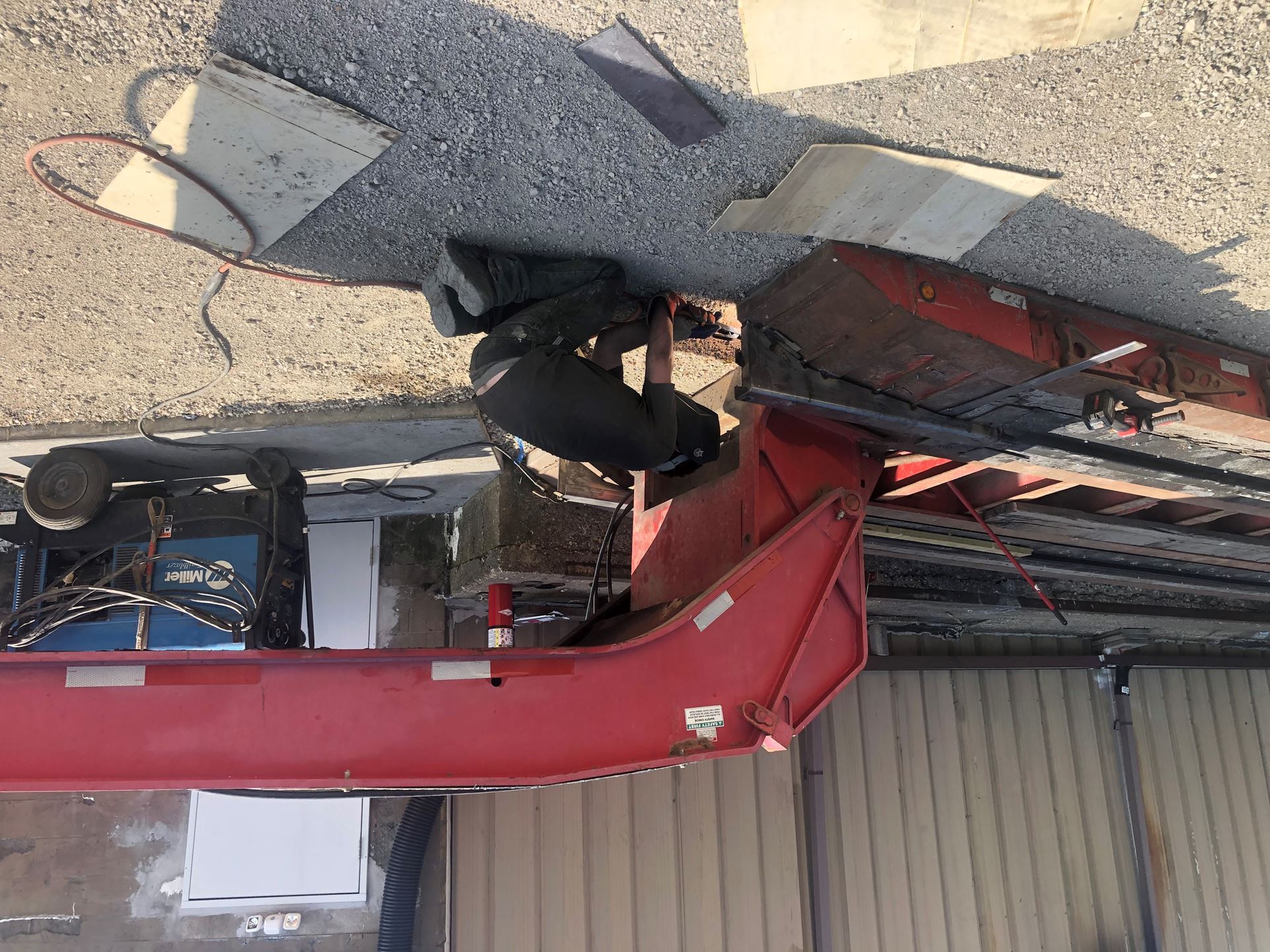
Gerrick welded two special transition pieces on the trailer to meet the rail ramps. Jeff Bennett photo
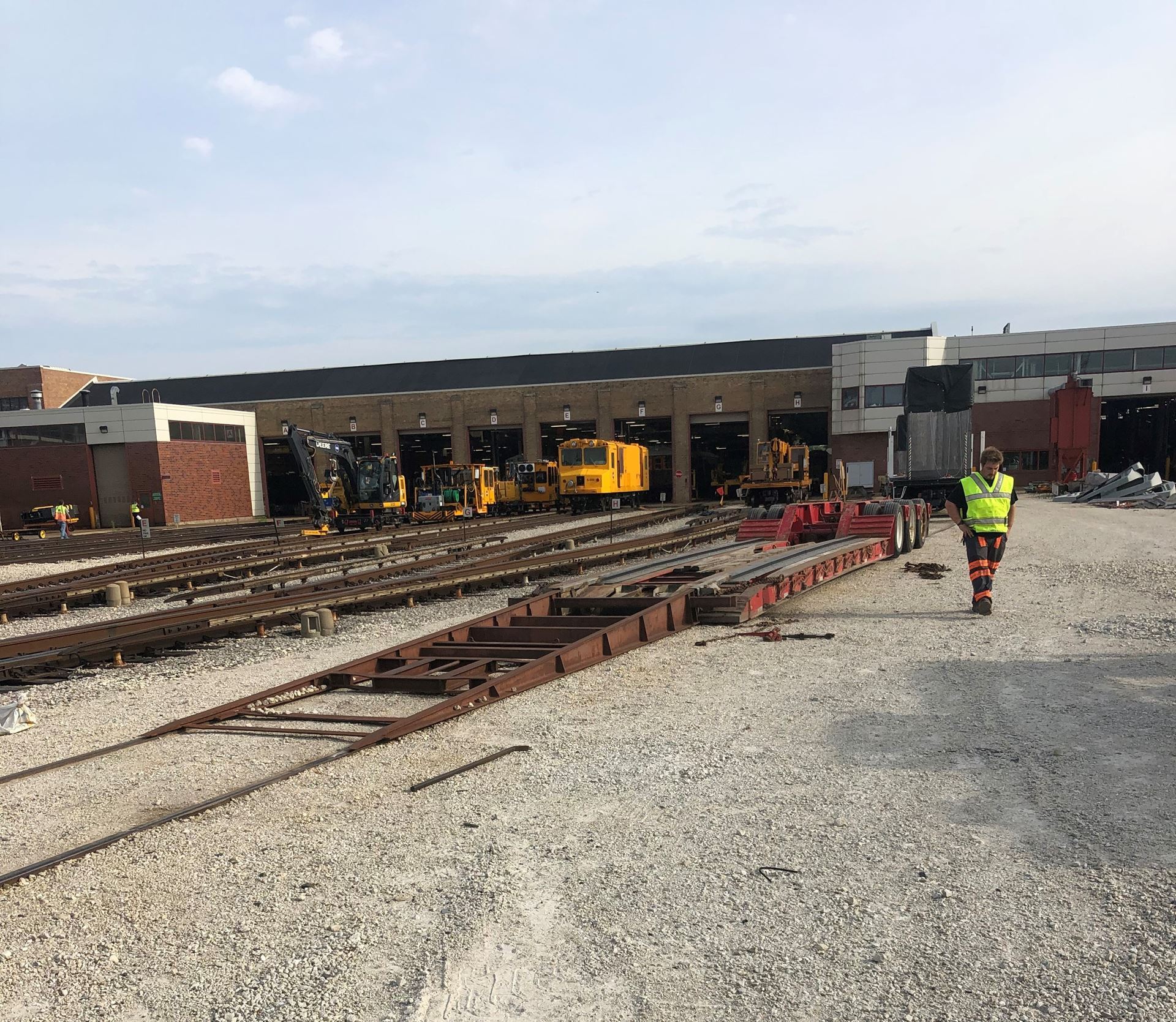
It’s July 15th and the trailer is in the yard of the CTA’s Skokie Shops with a CTA ramp set ready to receive MS-65. Jeff Bennett photo
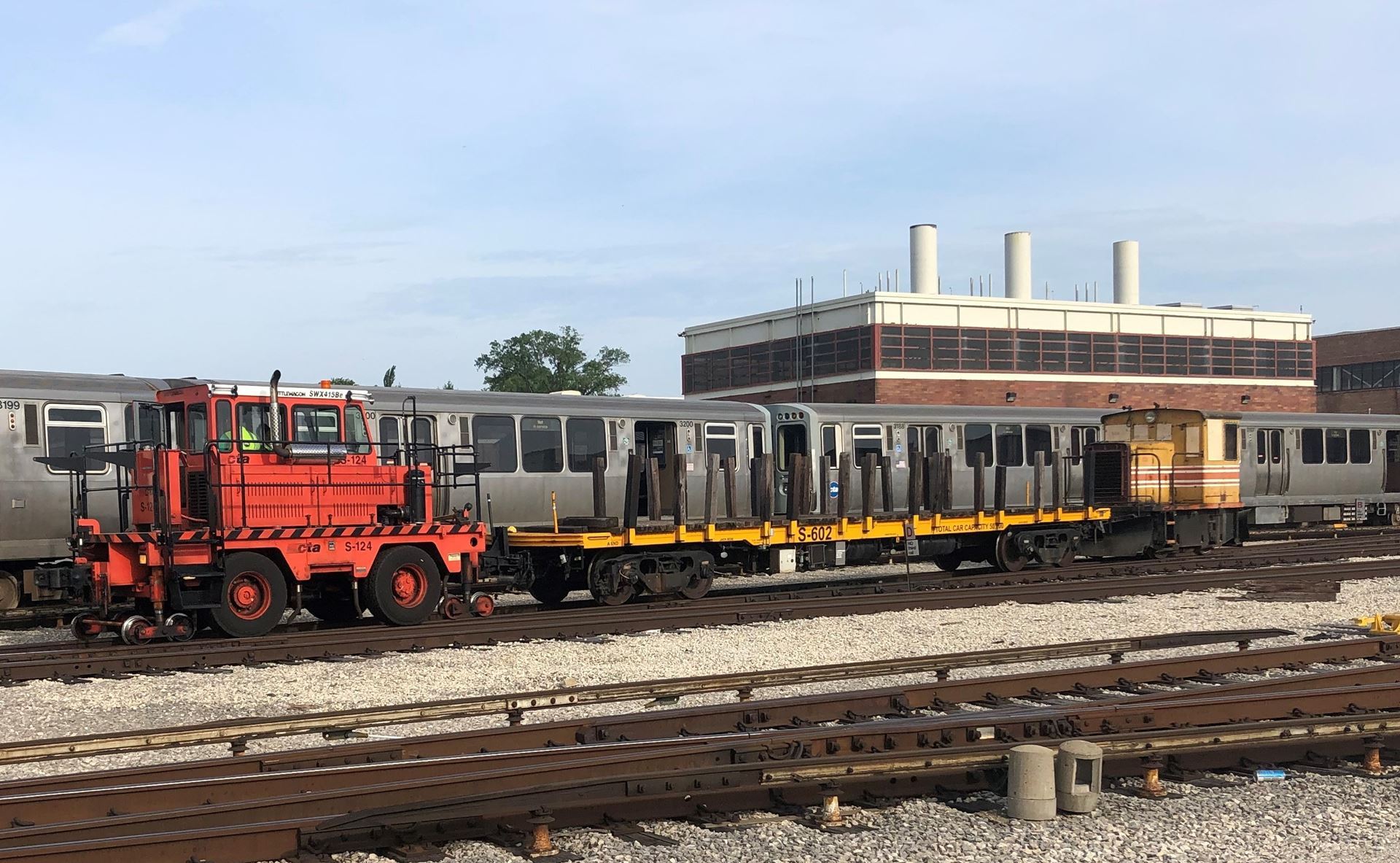
CTA’s Shuttlewagon S-124, using work flat S-602 as an idler car, pulls MS-65 out of the shop into the daylight. High rail Shuttlewagons now take the place of MS-65 moving cars around the shop when 600 volts is not available and have the added advantage of being rubber tired so they can be driven out of the way. Jeff Bennett photo
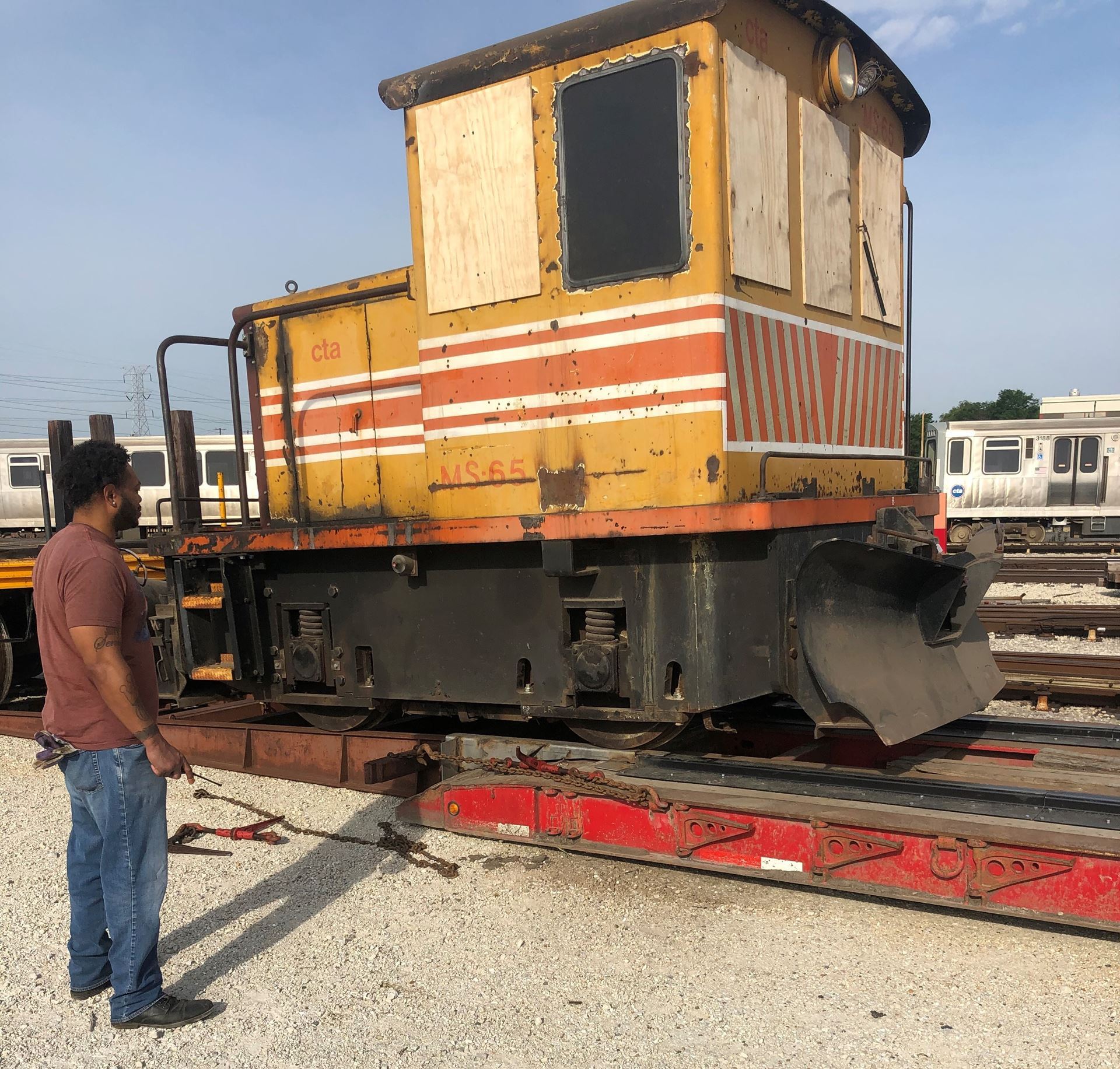
MS-65 is being pushed up the ramp onto the trailer with chain binders at the ready to secured the locomotive. Jeff Bennett photo
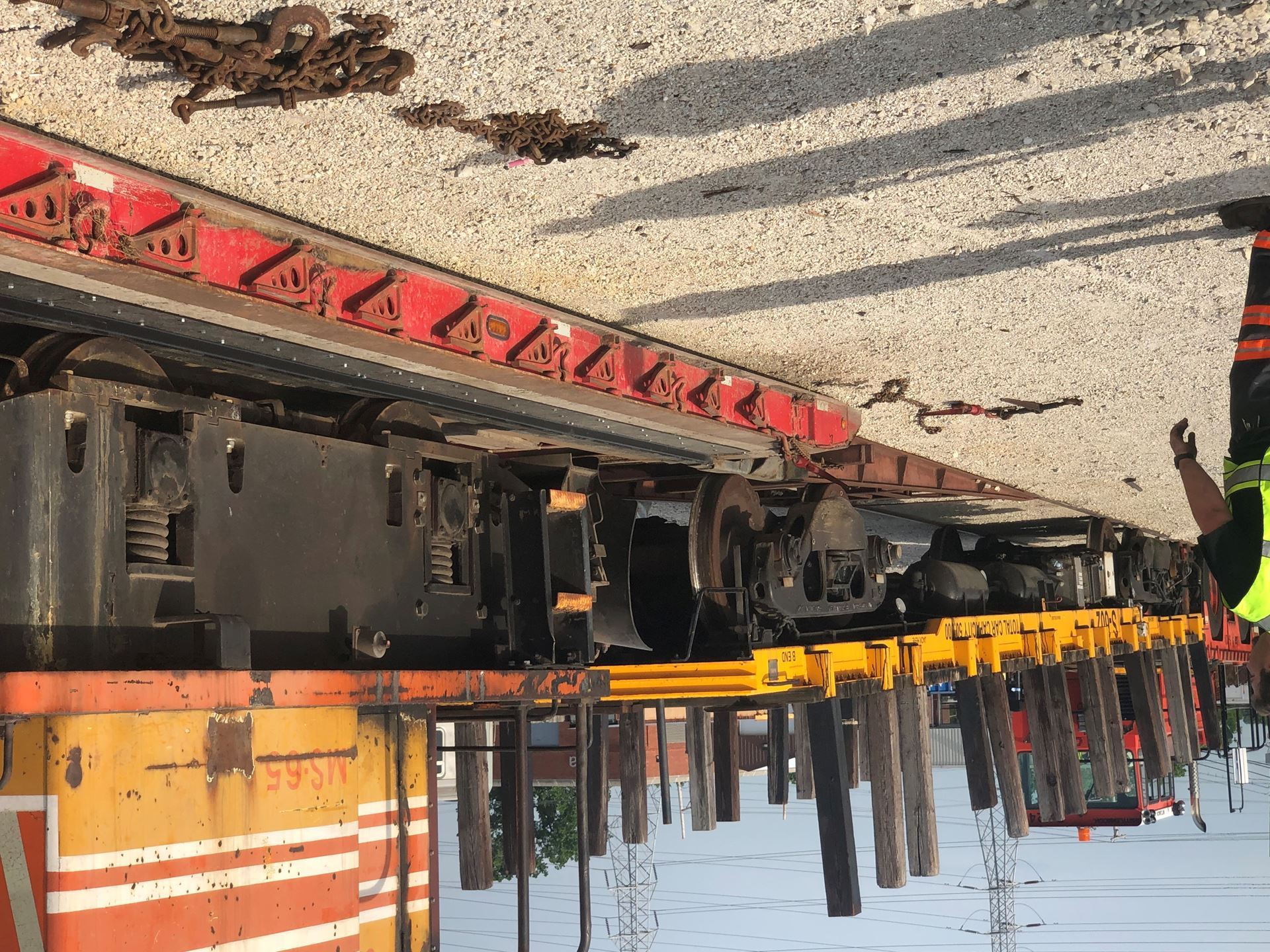
And the idler flat is used to position the locomotive in the center of the trailer for best weight distribution. Jeff Bennett photo
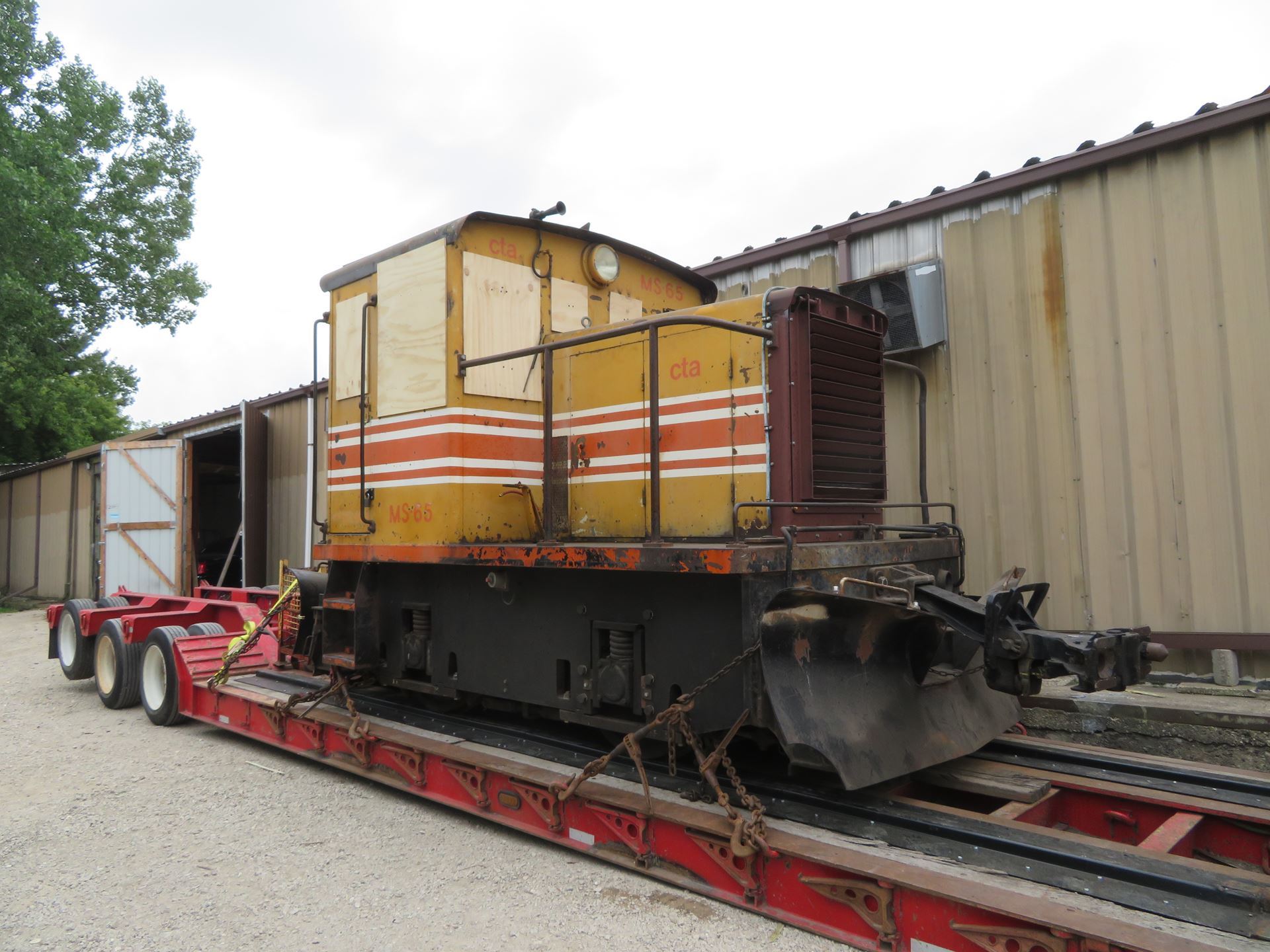
After some extra parts were loaded it was about an hour’s drive to his facility in Crystal Lake. Missing windows had been boarded up at Skokie Shops.
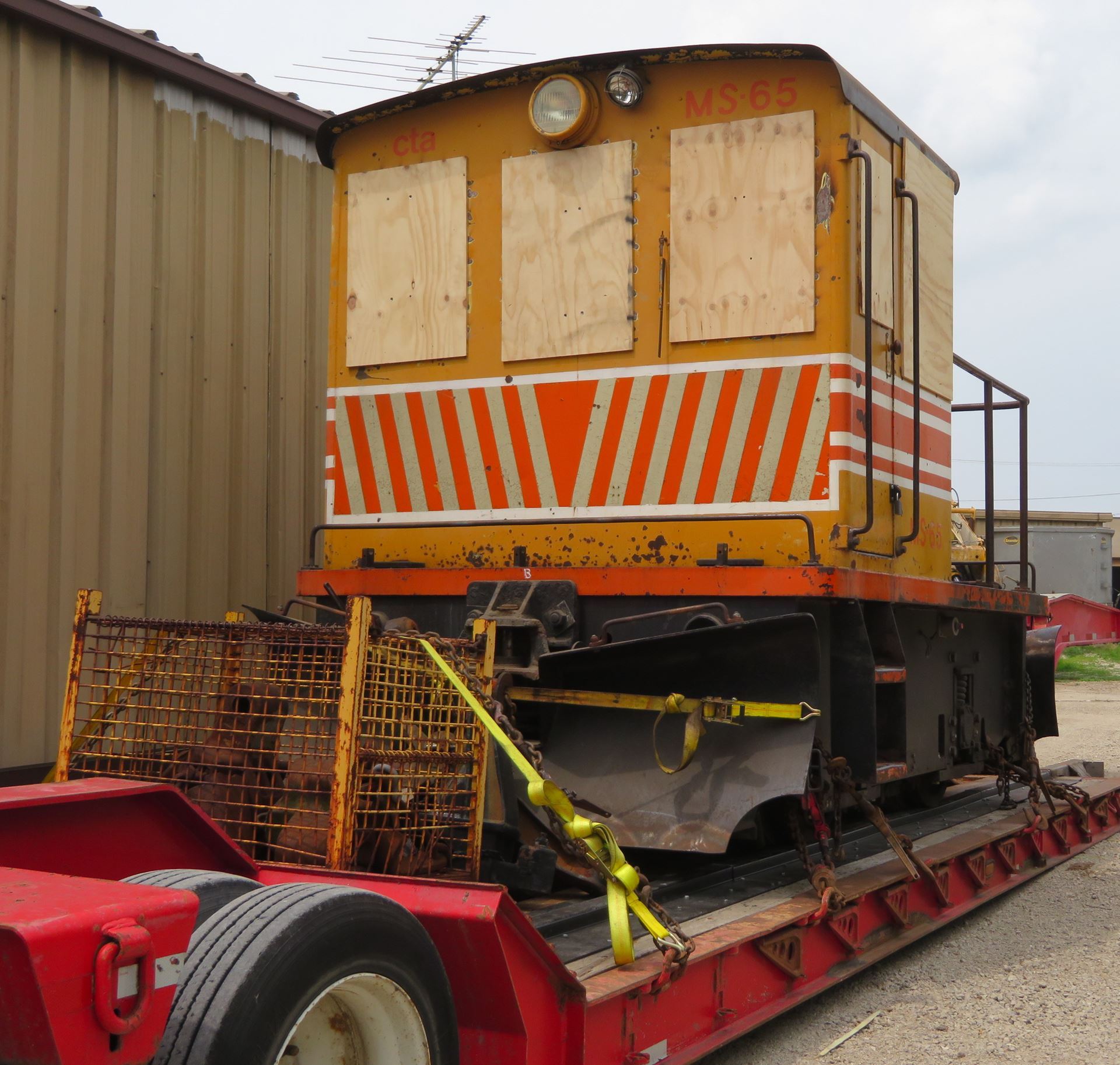
Here we see the backend of the locomotive on the trailer. It came equipped with snow plows on both ends along with a basket containing its original MCB couplers.
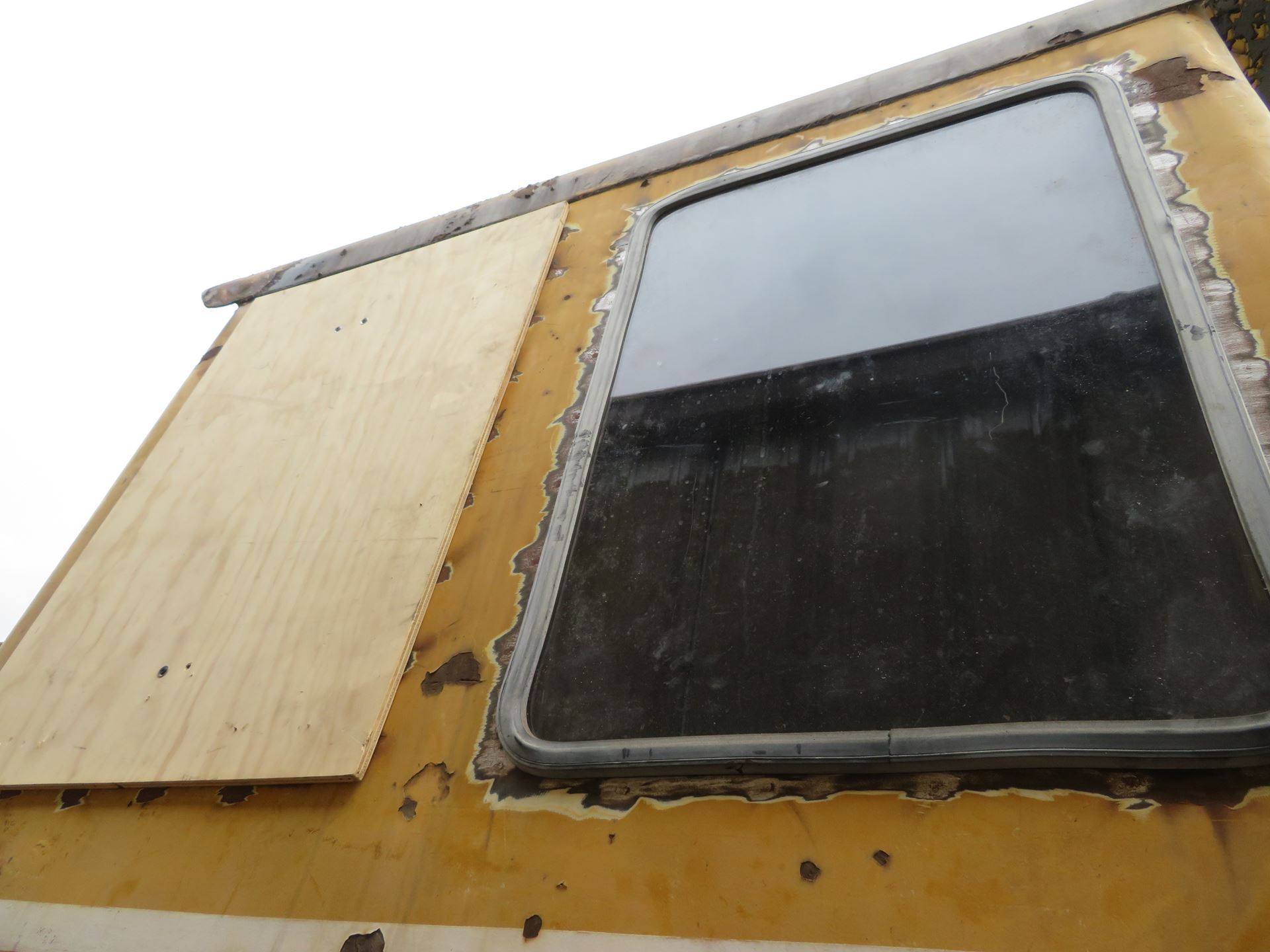
This was the only window that did not have to be boarded up. While the operator’s side window was boarded up it was fortunately found to be intact.
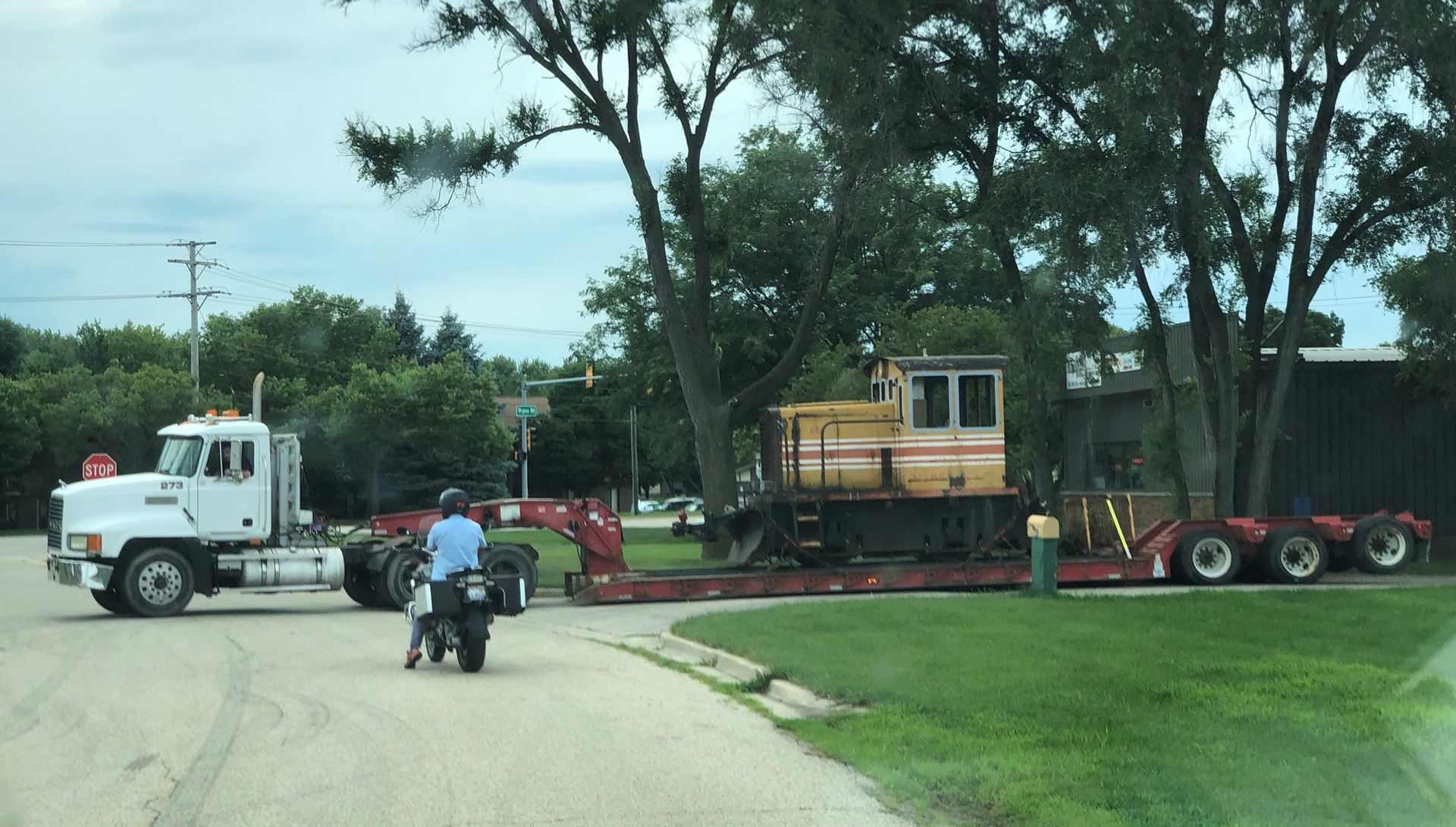
After filling in holes from the old window attachment system, the boards were taken off and the whole rig was taken to a local glass company. Jeff Bennett photo
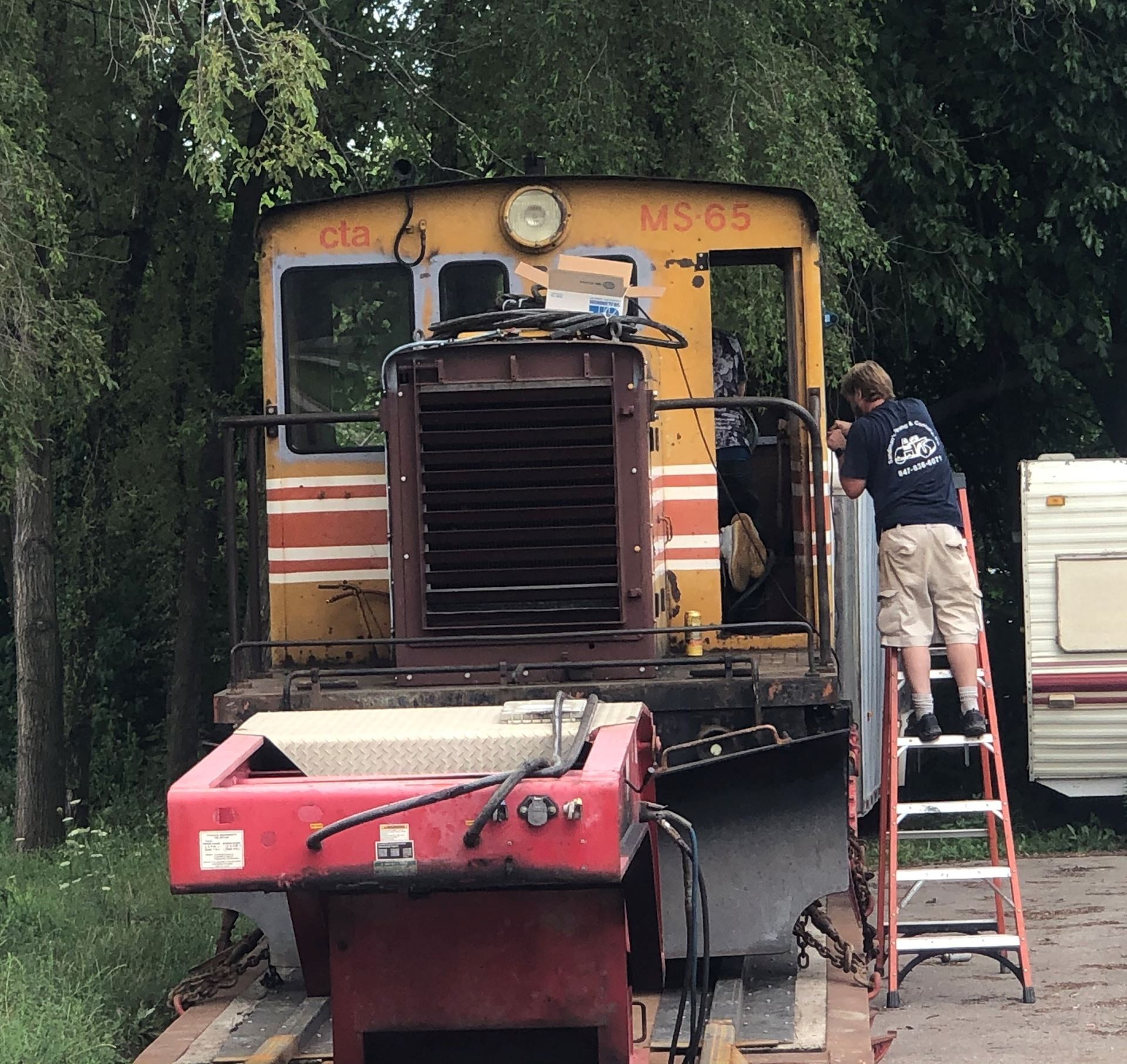
The glass technicians of LeWalt Glass of Crystal Lake, cut and installed the windows with new gasket material. The owner Ken gave us a good price on this work and materials as well. Work was completed in just one day!! Jeff Bennett photo
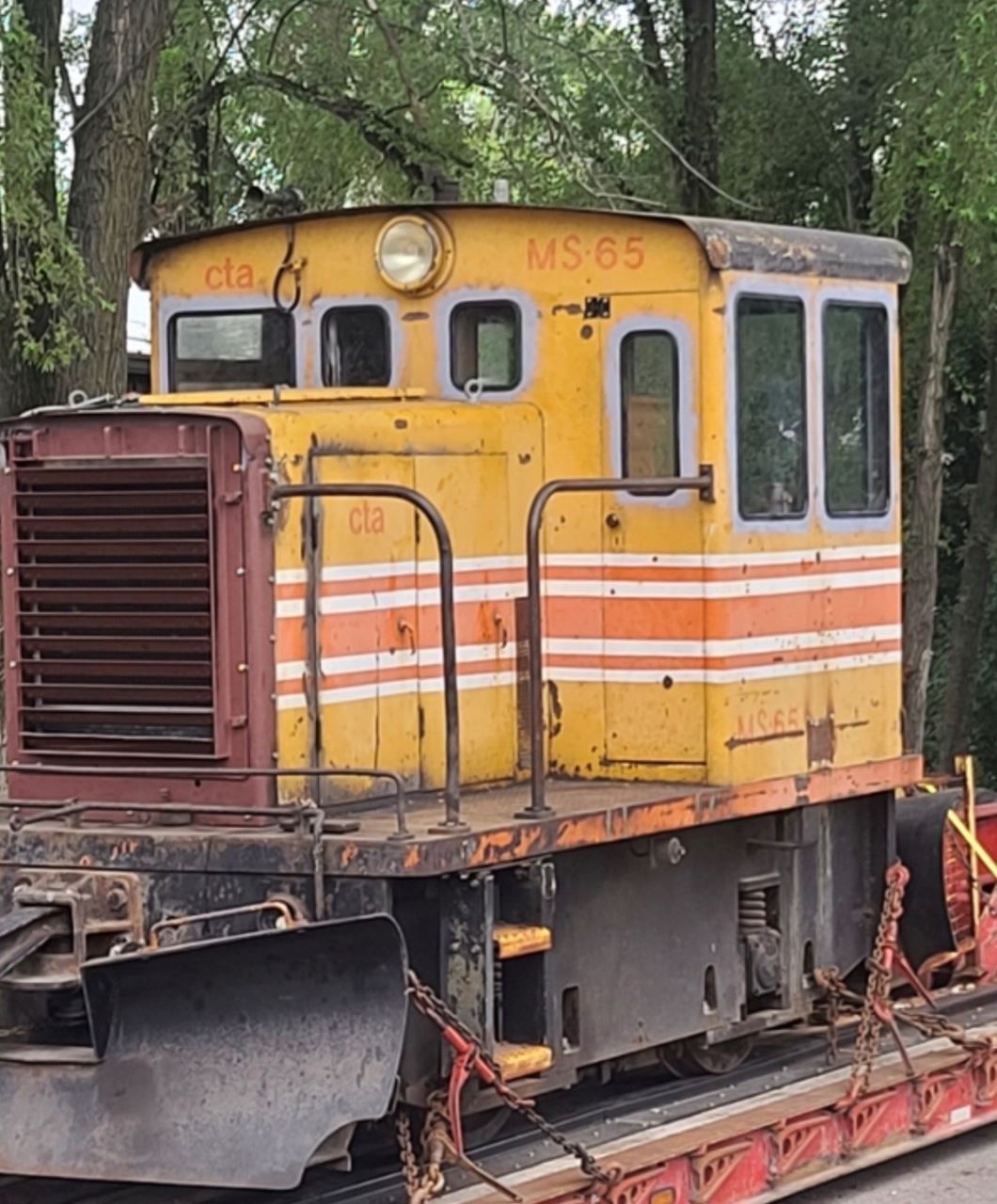
In an afternoon all the windows are installed but now we have to wait for the tractor to come back to pick up the finished job. Jeff Bennett photo
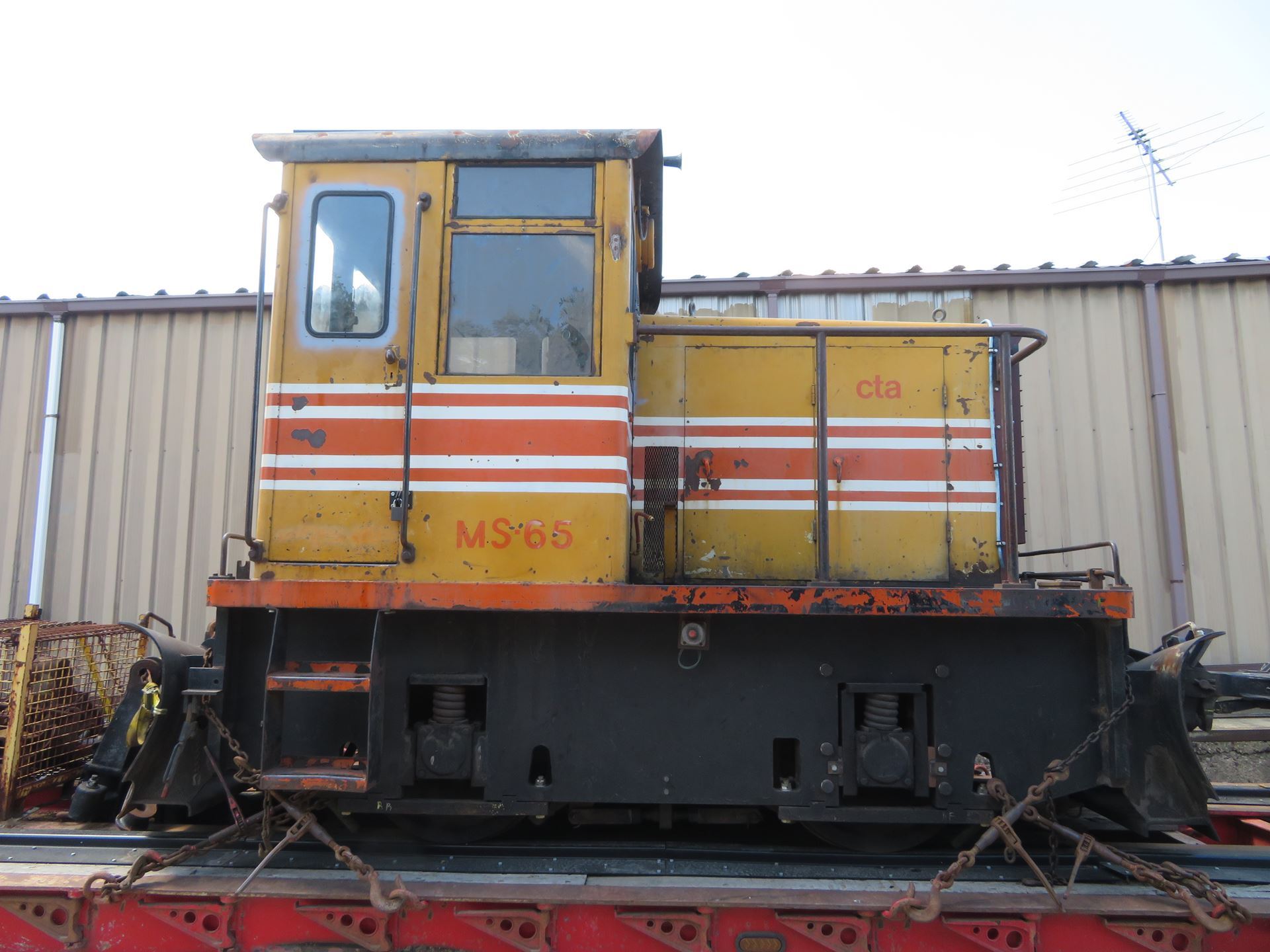
Ms-65 is back behind Jeff’s facility waiting for the next steps to get it running. Both snow plows can be seen in this view.
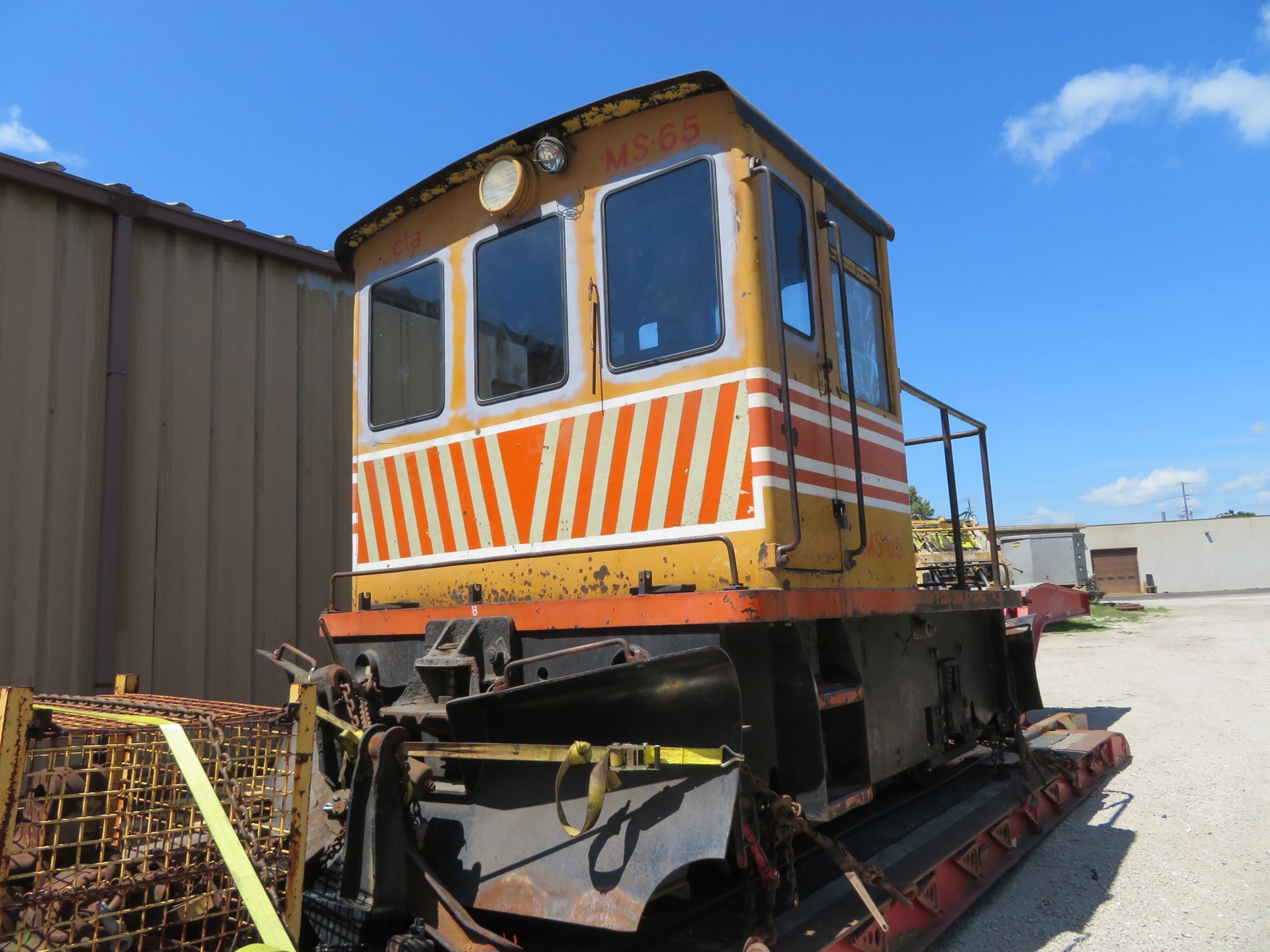
The backend looks much better with the new windows in. Jeff and his crew spent a lot of time after this picture was taken going over the Cummins diesel engine, the generator, traction motor, air compressor, handbrake and other items that make the locomotive operational. The rear snow plow had to be removed to gain access underneath the locomotive in this process.

It is Saturday August 8th and Jeff is giving member Connor Ladley final instructions as the now operable locomotive is ready to go to its new home in South Elgin. Fortunately the locomotive is small enough that special permits were not needed to make all the highway moves. Lorrie Nevens photo
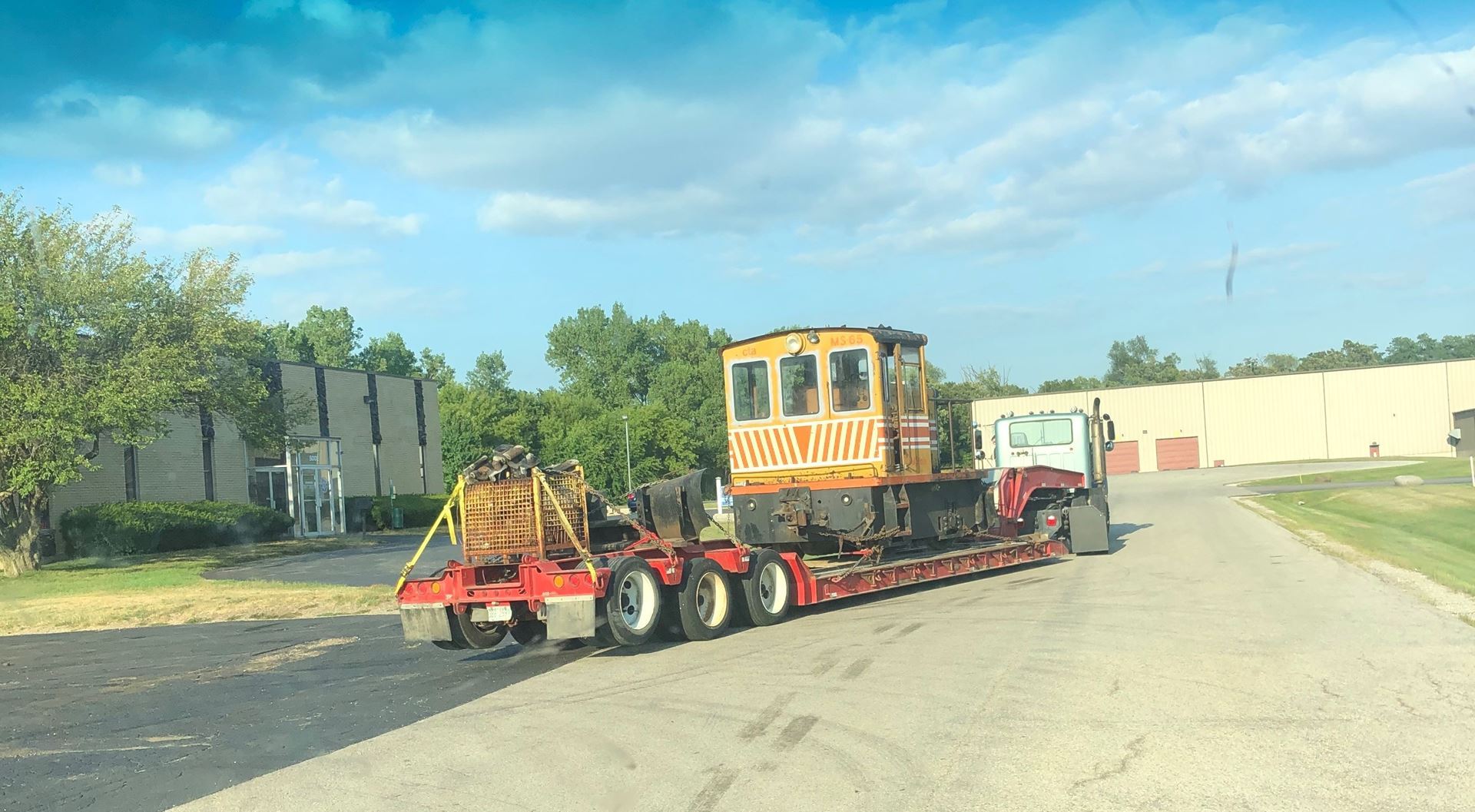
And away we go South Elgin as seen from Jeff’s tool ambulance. Jeff Bennett photo
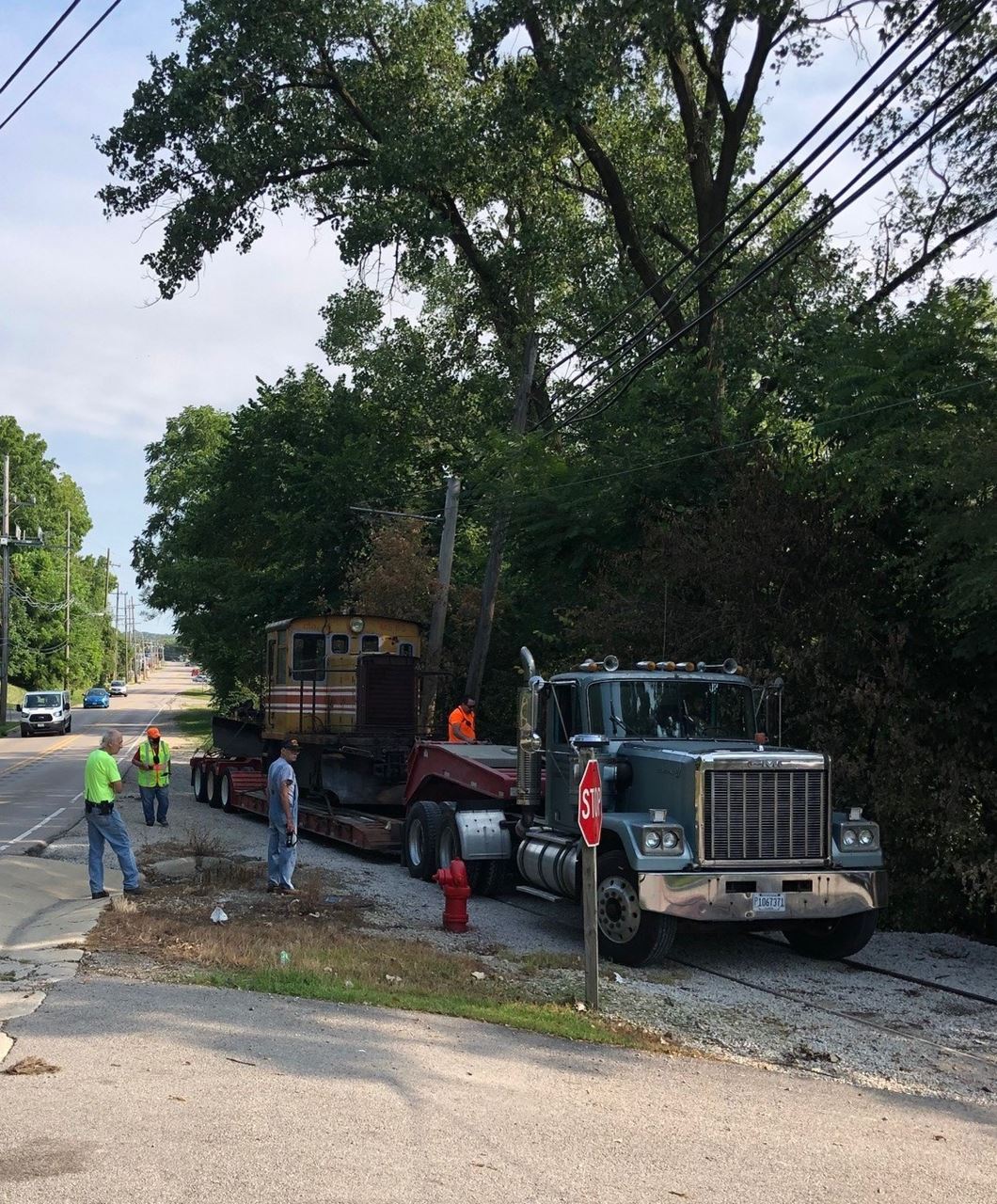
Shortly after arrival at our unloading area along Highway 31 at the north end of the mainline in South Elgin on a sunny summer morning. Now the unloading work has to begin. Lorrie Nevens photo
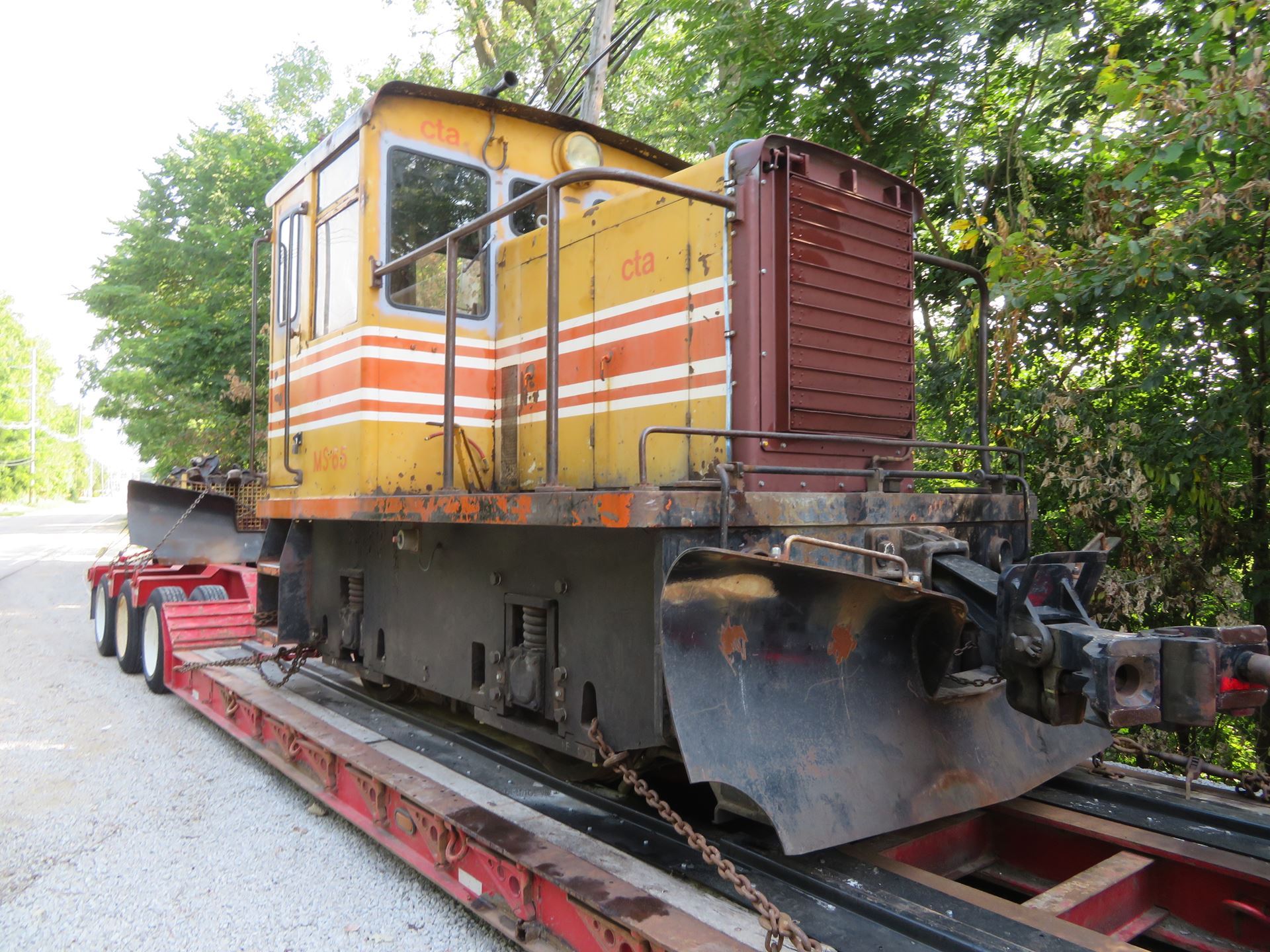
Perched on the trailer we can see one of the Ohio Brass form 5 couplers that makes this locomotive unique and useful to the museum as it can move any of our all-electric CTA cars as well as crane flat S-314.
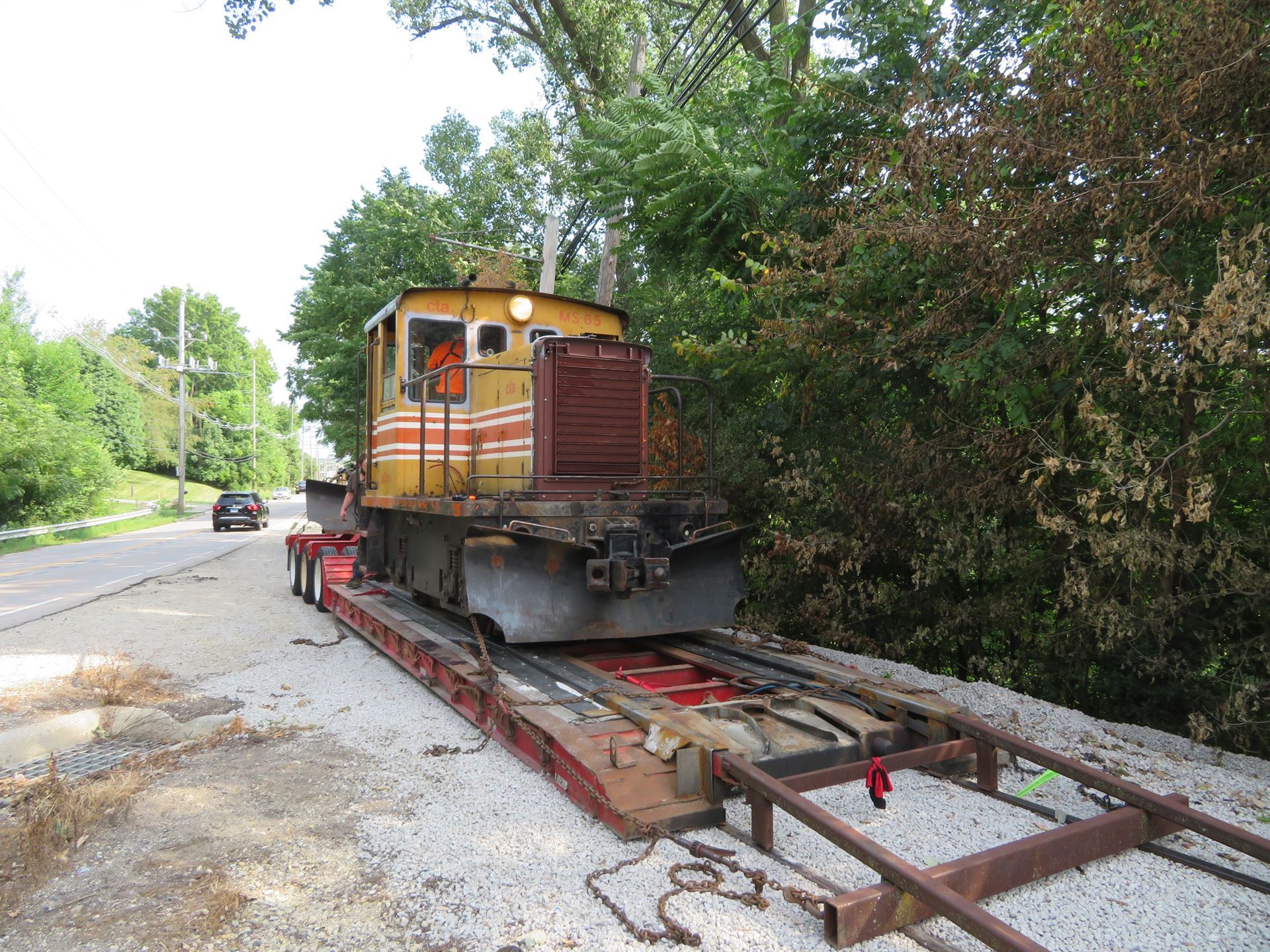
The museum’s shorter transition ramp is chained in place and the locomotive’s engine has been started up as the headlight is on.
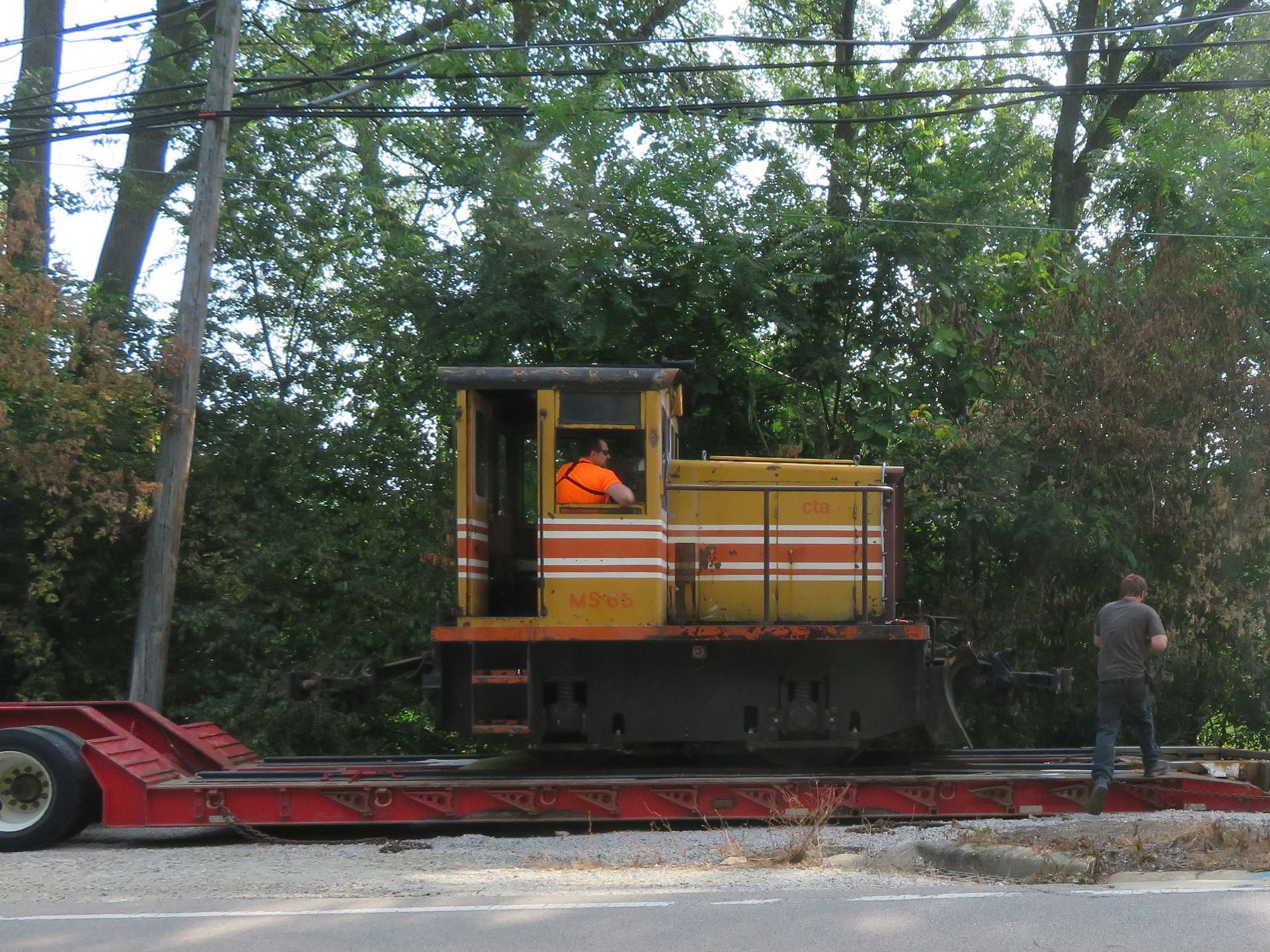
The final chain binders have been undone and now MS-65 is ready to move off the trailer onto the rail with Jeff at the throttle.
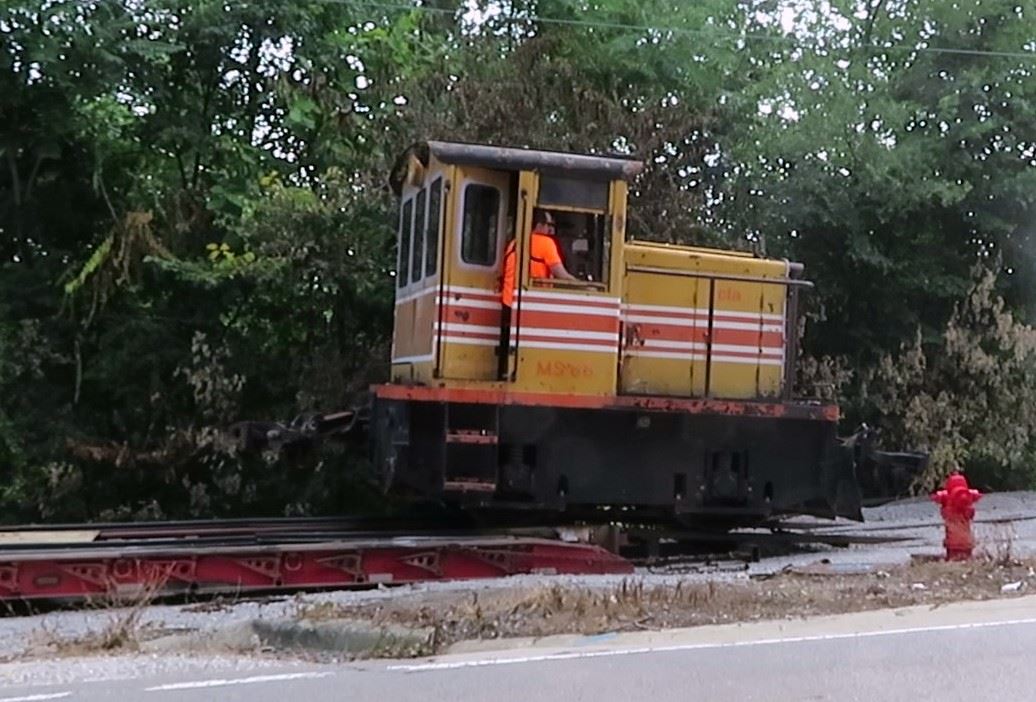
And onto the ramp, the scariest moment of all. Live Video available on our Facebook Page
https://www.facebook.com/FoxRiverTrolleyMuseum/videos/298192028065334
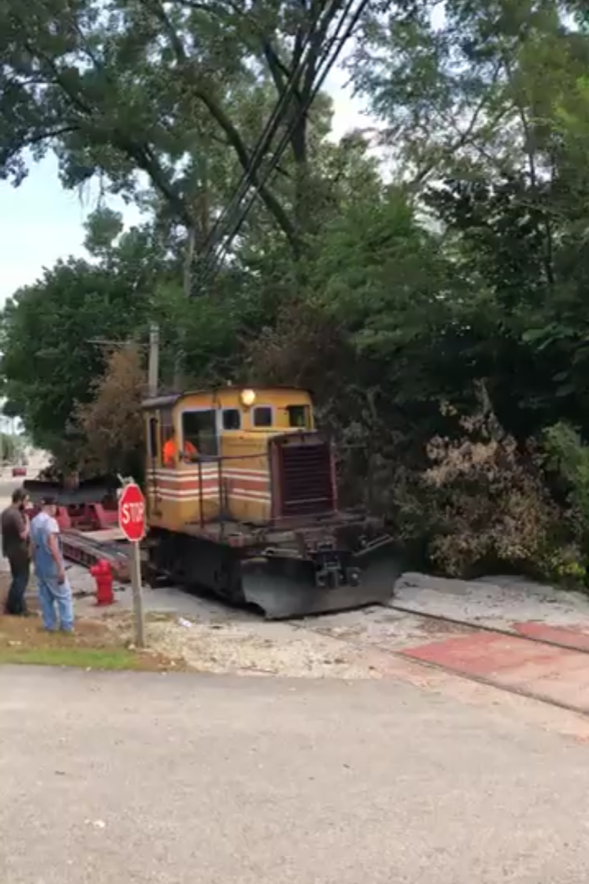
Coming down the ramp onto the rails of its new home. Lorrie Nevens photo
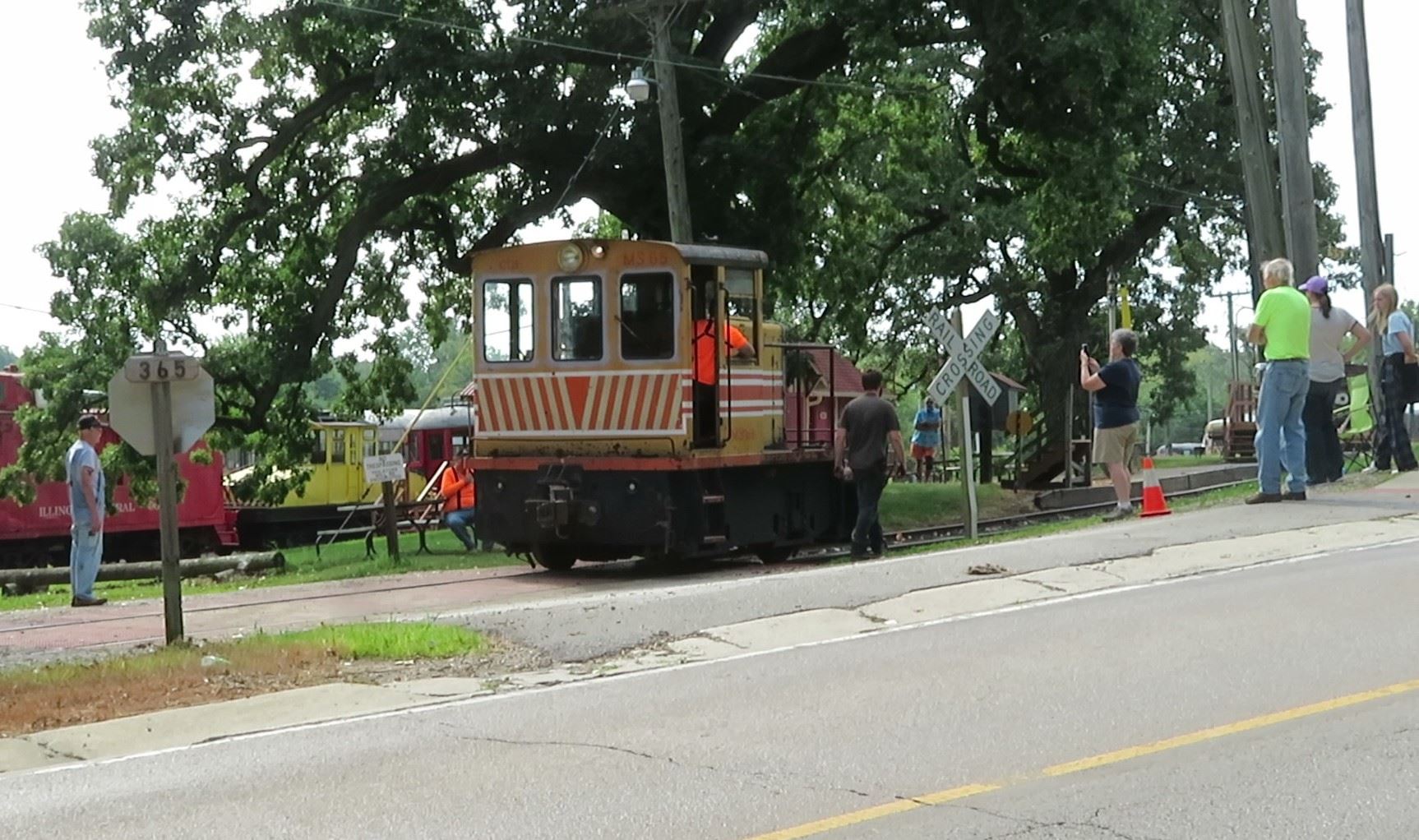
Heading across the driveway for the first time. Connor took the air horn apart, cleaned it up ahead of time, so it could sound the grade crossing signal. Unfortunately, the bell disappeared years ago at Skokie Shops so now we have to find a replacement.
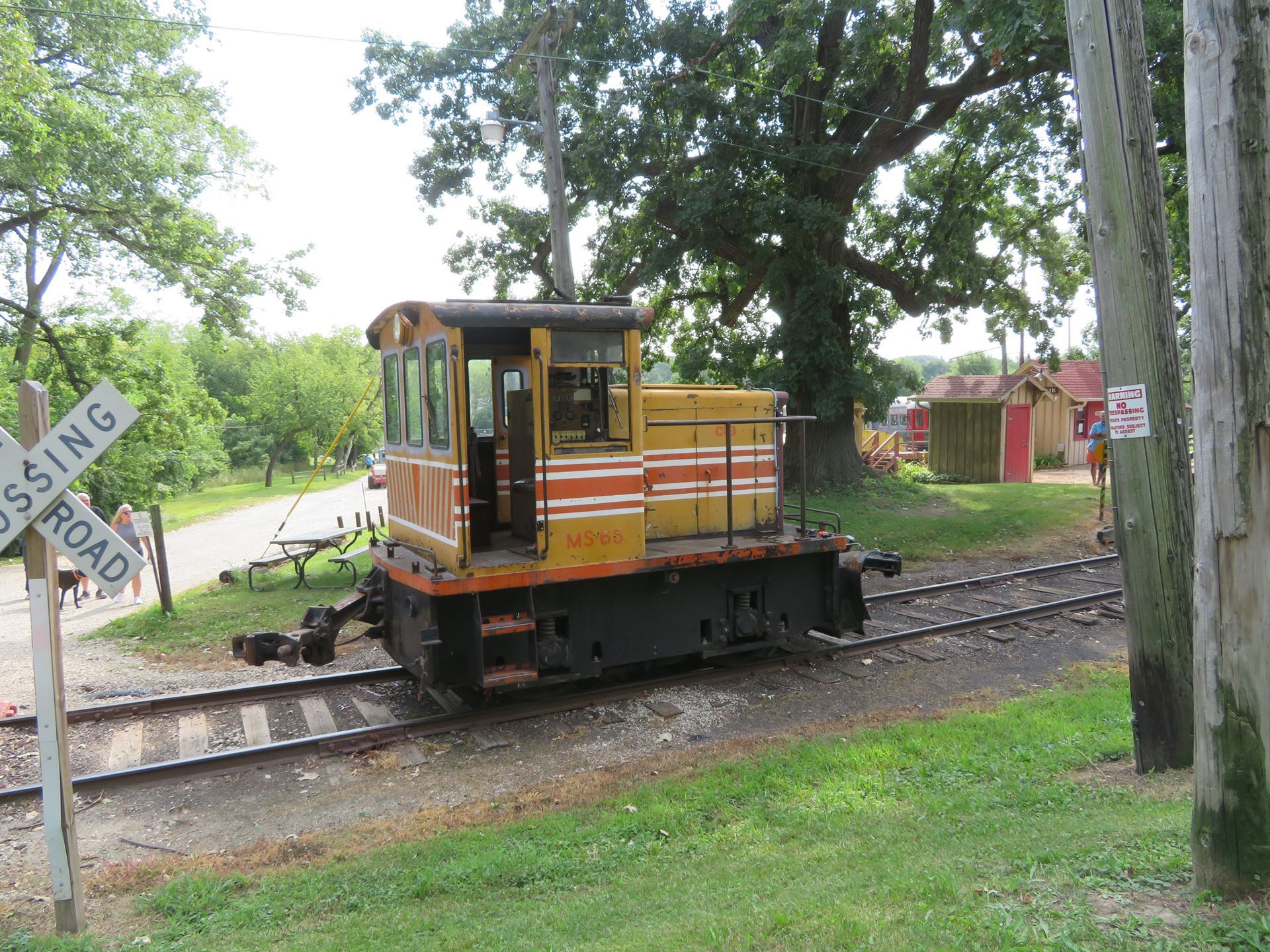
This is the engineer’s side of the locomotive. The window cranks down just like an old automobile on our 1942 locomotive.
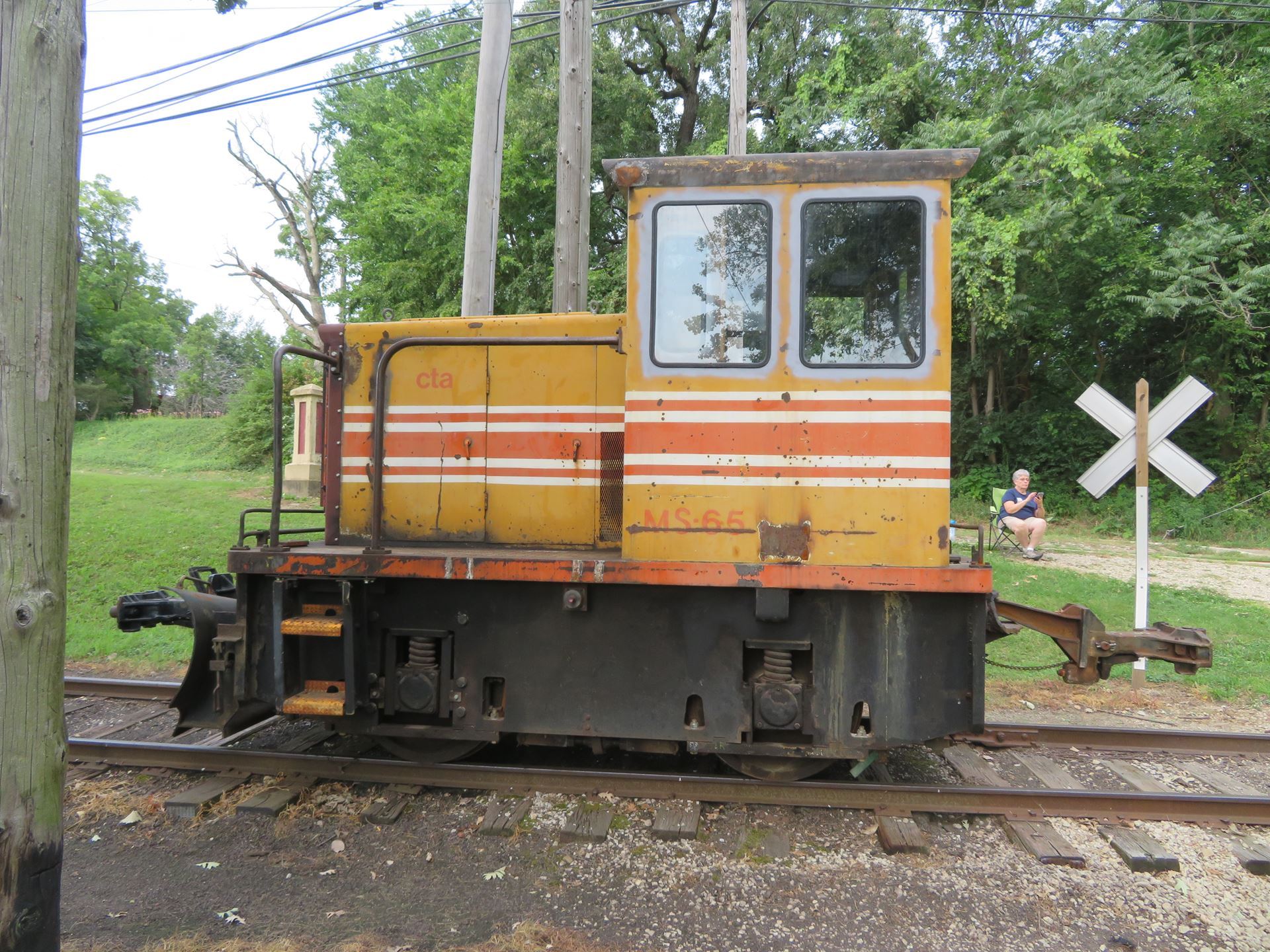
And this is the blind side. The cab is not very roomy as the engine compartment protrudes into it on this very compact “critter”.
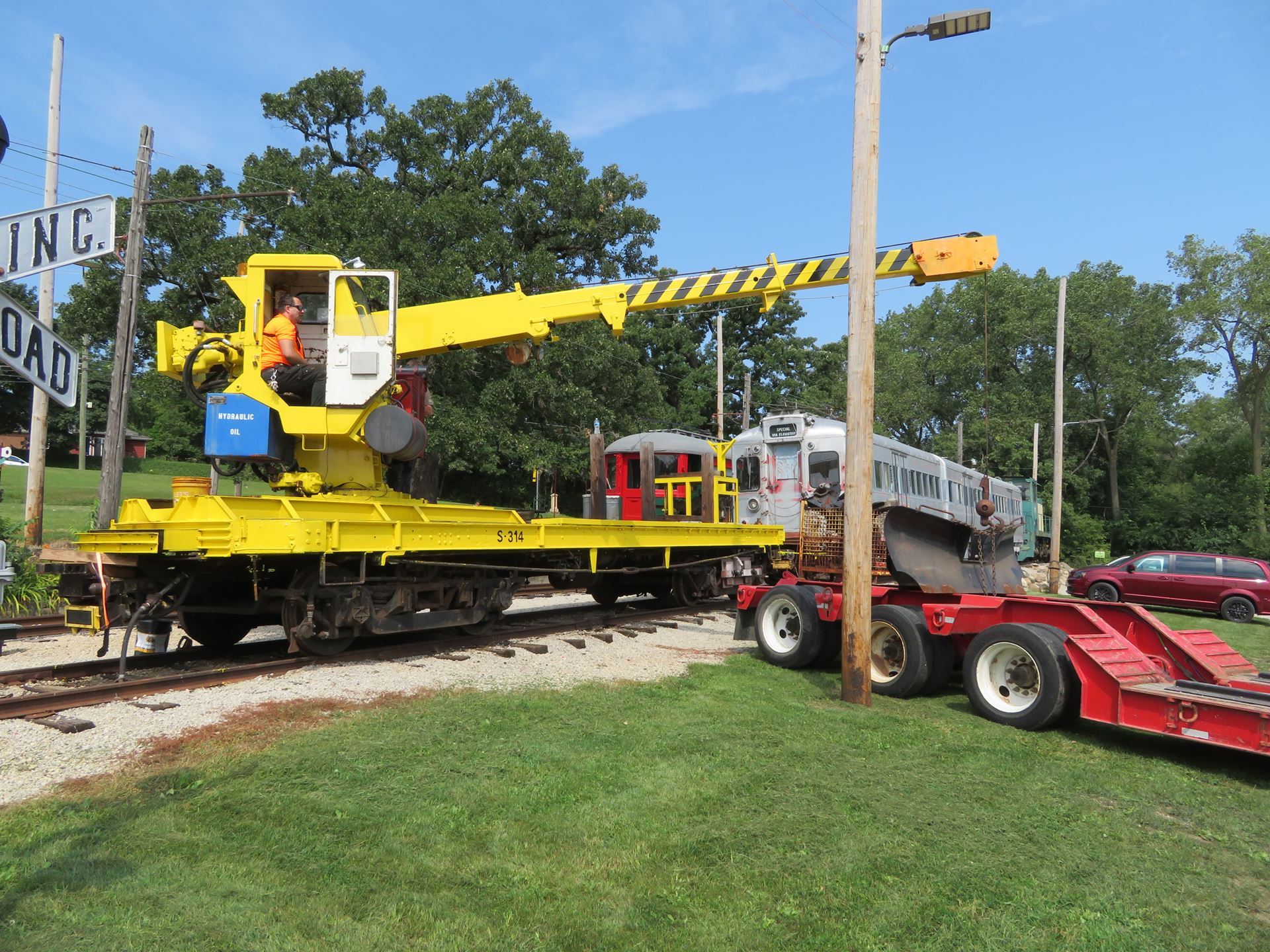
The lowboy trailer was next moved to the parking lot where CTA S-314’s crane was fired up to remove the rear snow plow from it.
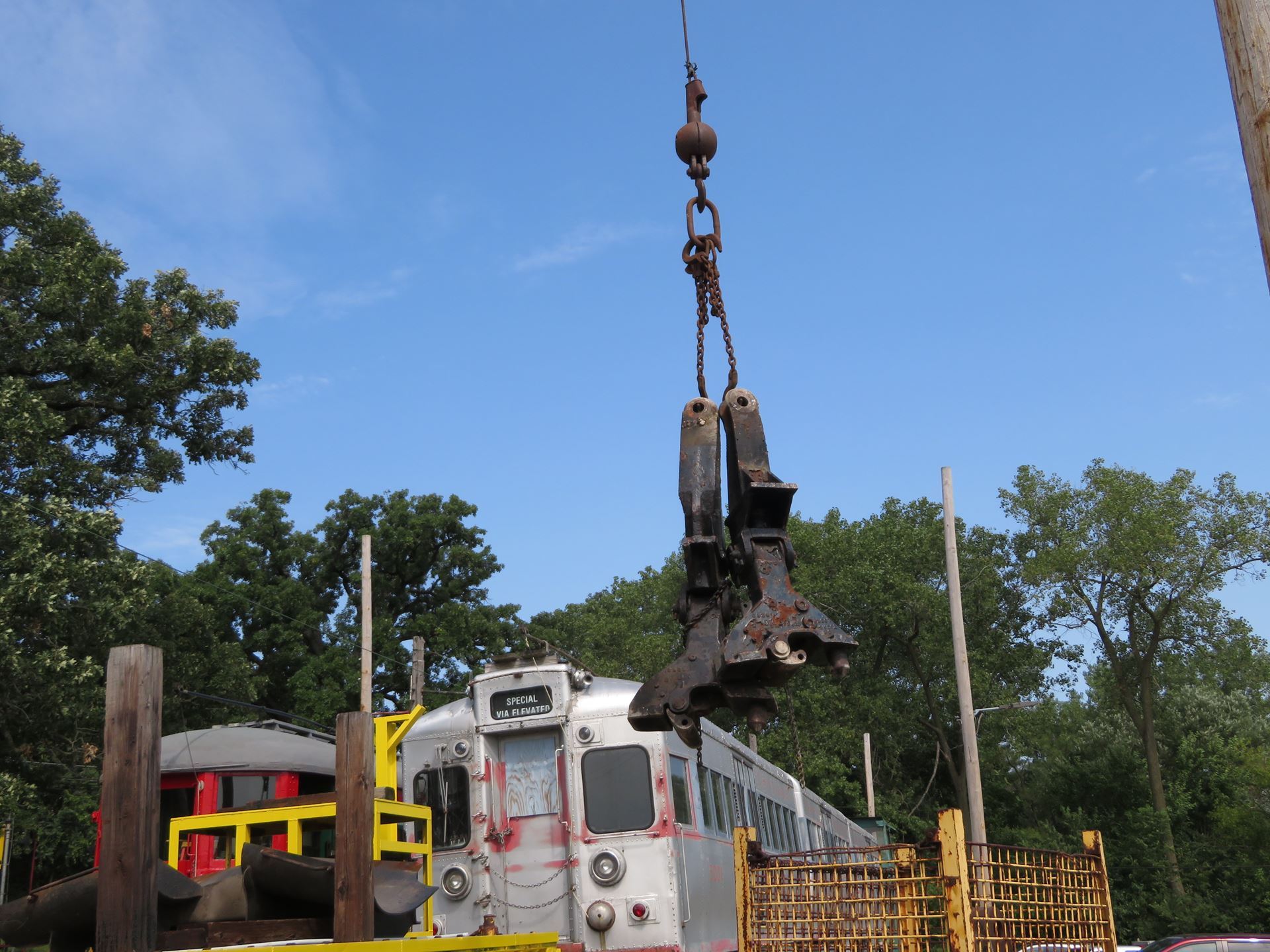
Next came an extra set of Ohio Brass form 5 couplers, modified to fit MS-65, just like the ones currently on it.
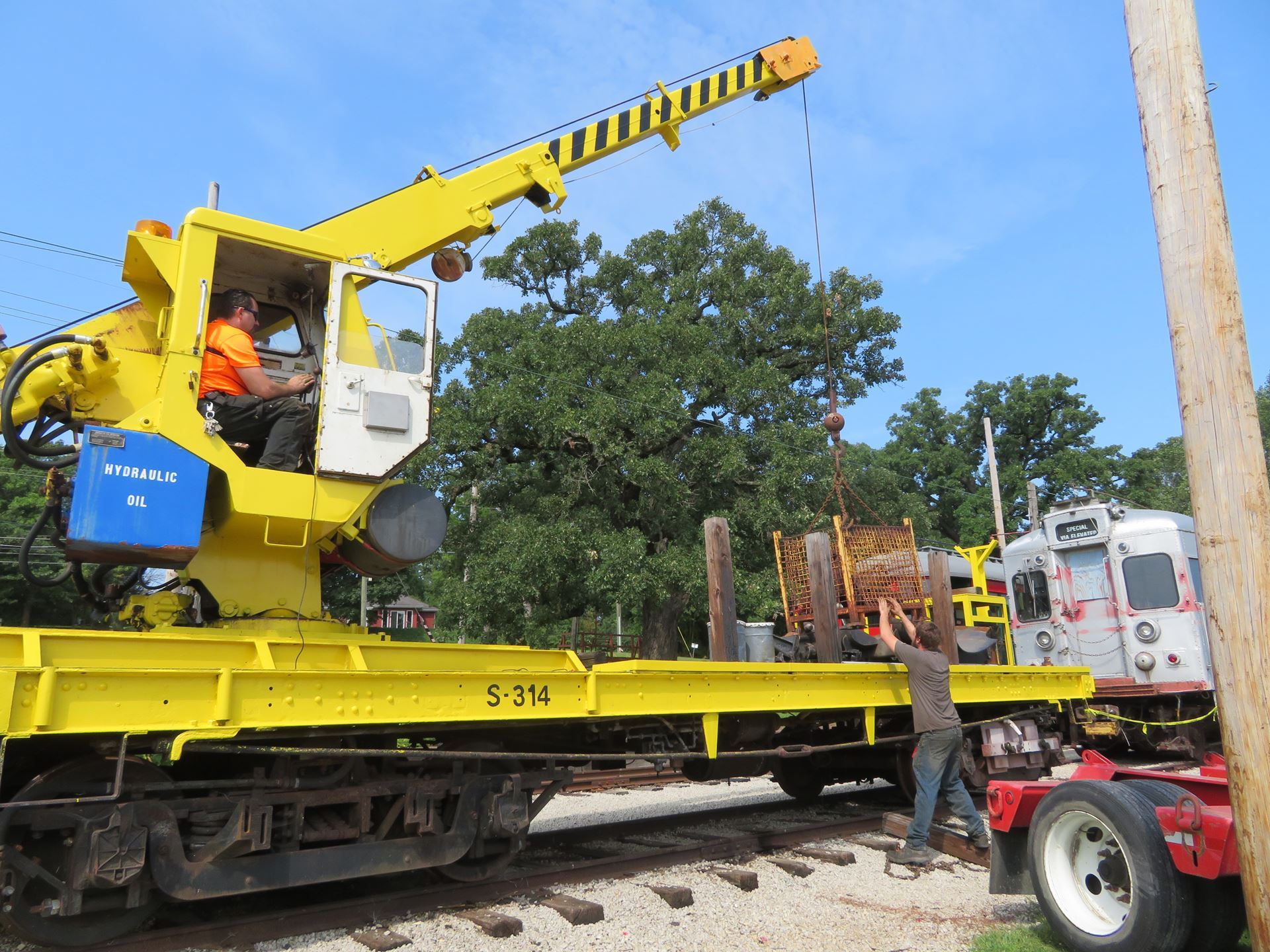
Finally the basket containing the MCB (Master Car Builder) or railroad couplers that came with the locomotive when it was built for moving standard freight cars. All these items are stored on S-314’s deck for the time being.
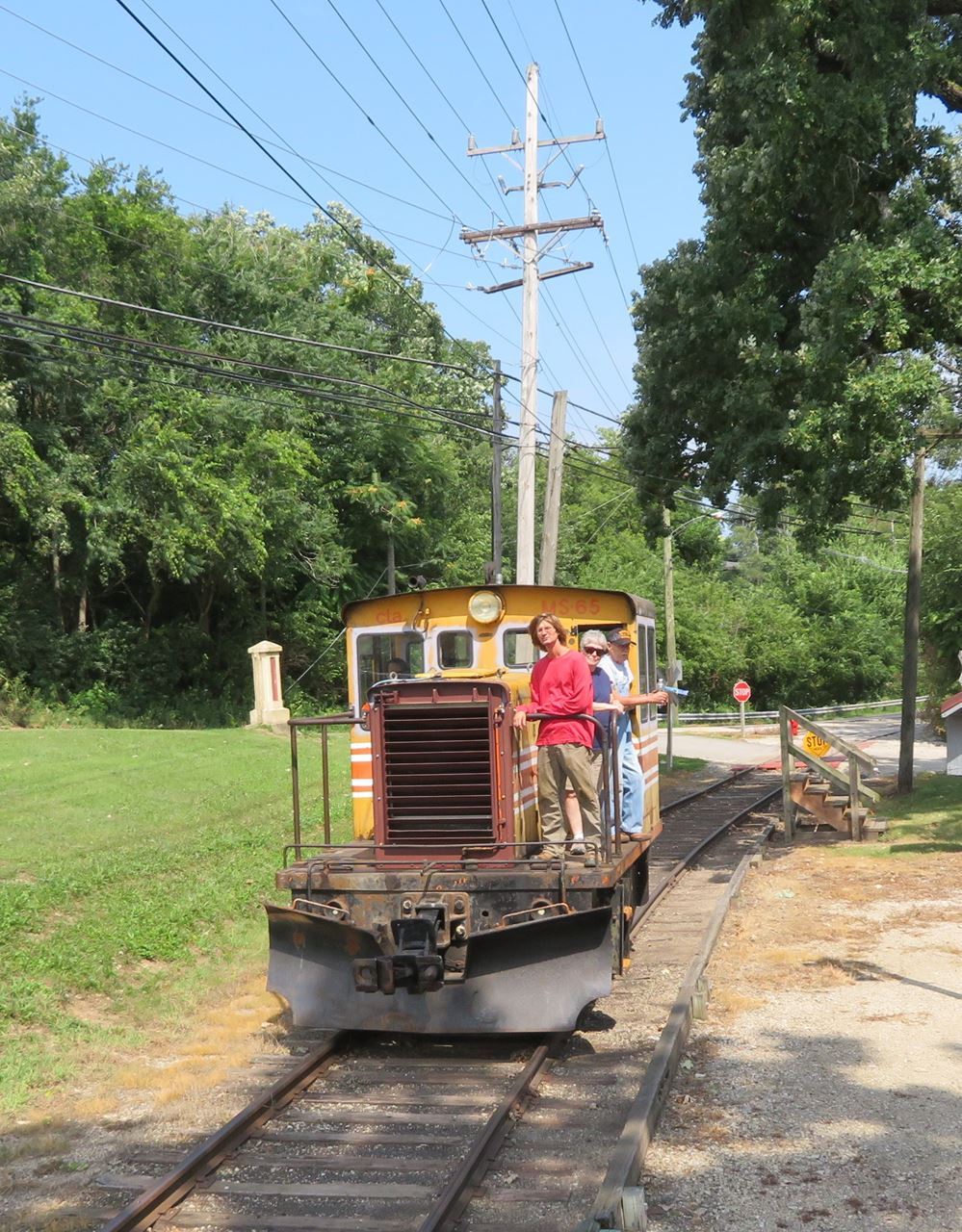
After all the unloading was done it was time to take a first trip on the locomotive. We went down to the Stearns Road Bridge and back as Jeff didn’t want to run it too much since the chain lubrication system was not in place. It has since been installed. A large chain transfers power from the rear axle to the front axle.
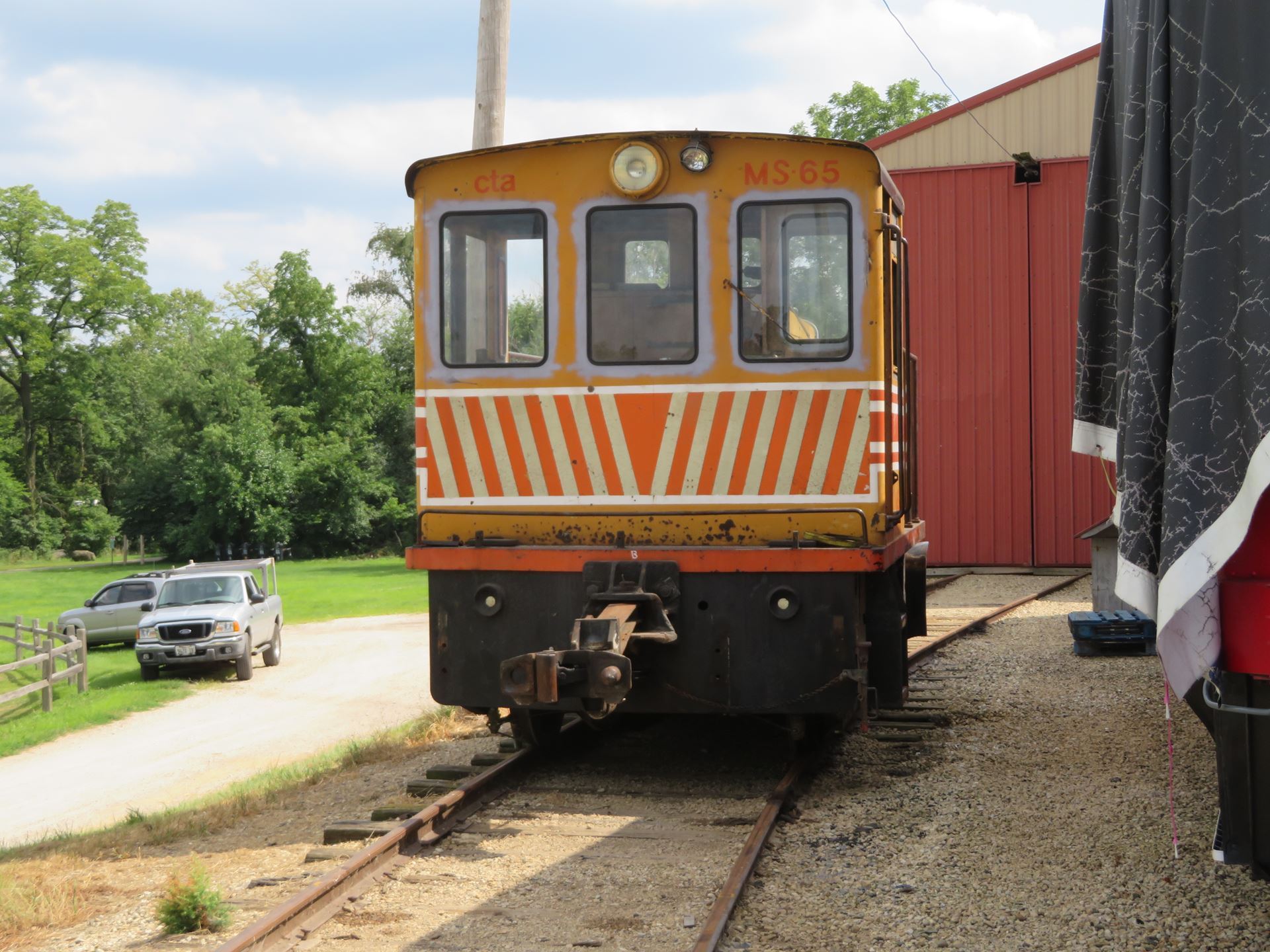
The brakes seem to be a little abrupt and after an in-yard test run the unit was tied up on Track 5. Some journal box shims, which appear to be worn, are causing the wheels to be a little out of tram or alignment, which in turn is causing the brakes to pull more on one side then on the other. One shim was removed for use as a pattern for more to be made up to remedy this problem.
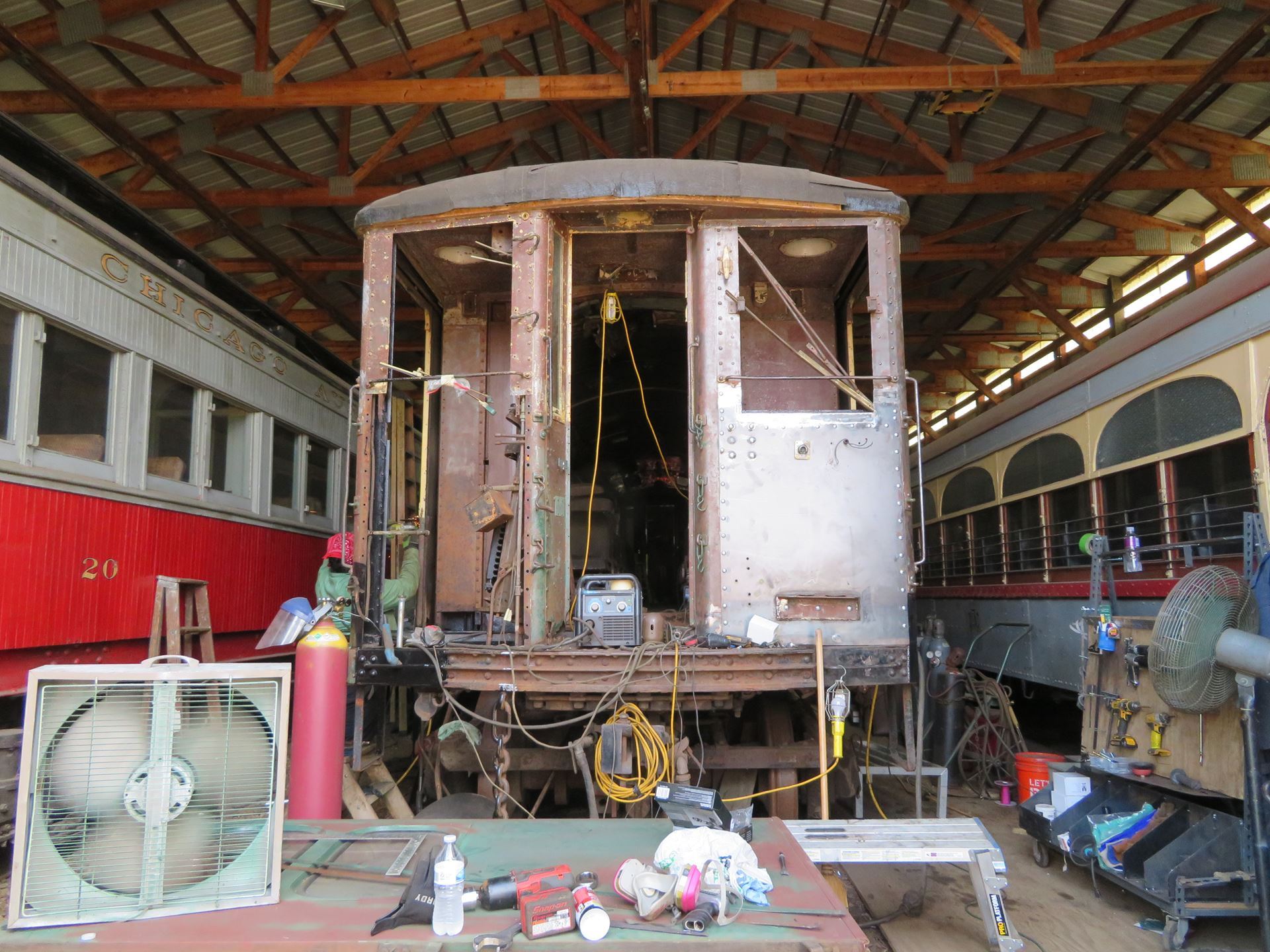
MS-65 is not the only show at the Museum as work continues on CTA 4288. The #2 cab controls have been removed by Jeff so that the new metal skin can now be attached.
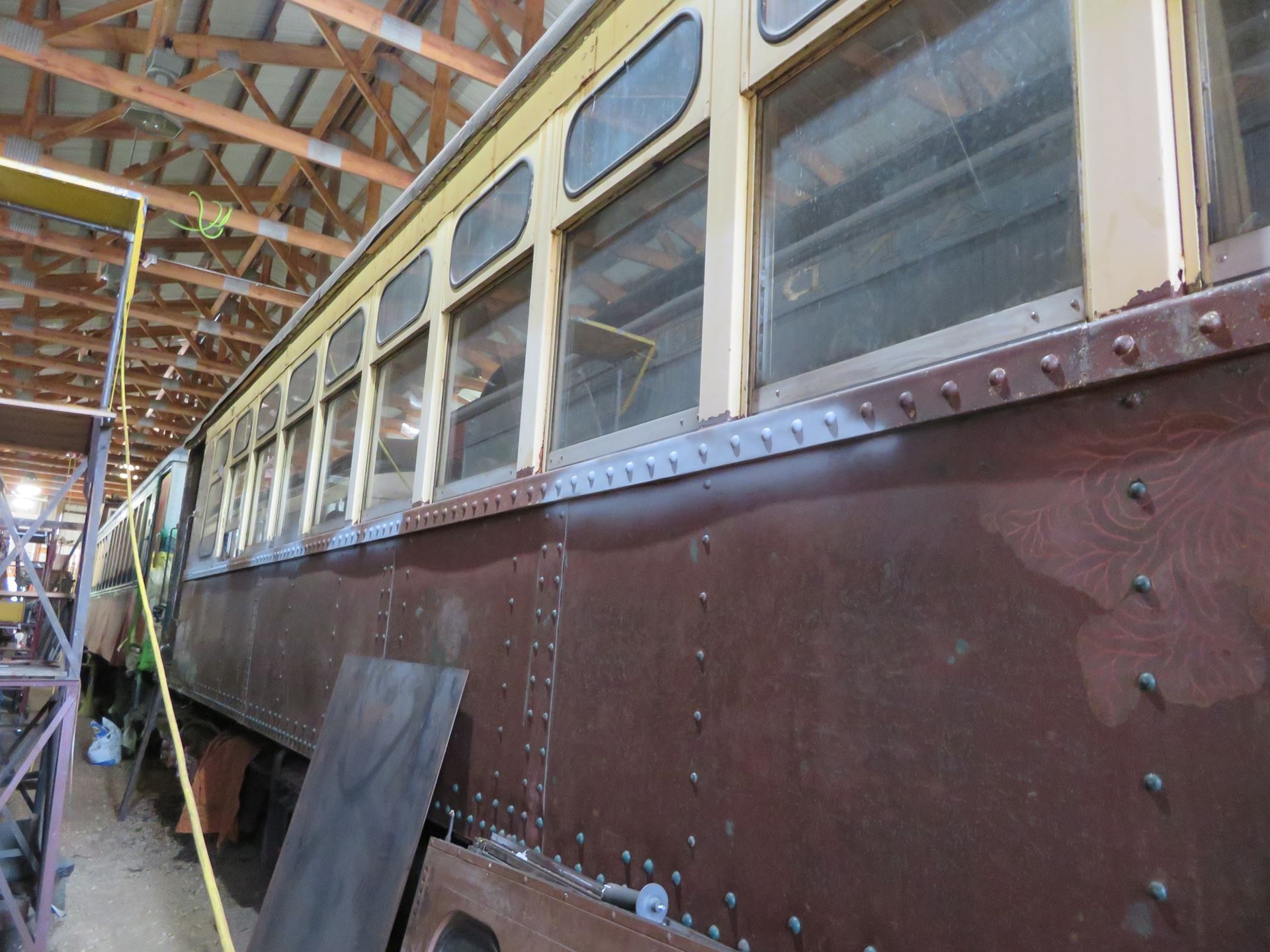
The lower side sheet of 4288 has had the green paint removed. Repairs will go on section by section instead of the whole side after lessons learned on 4451.
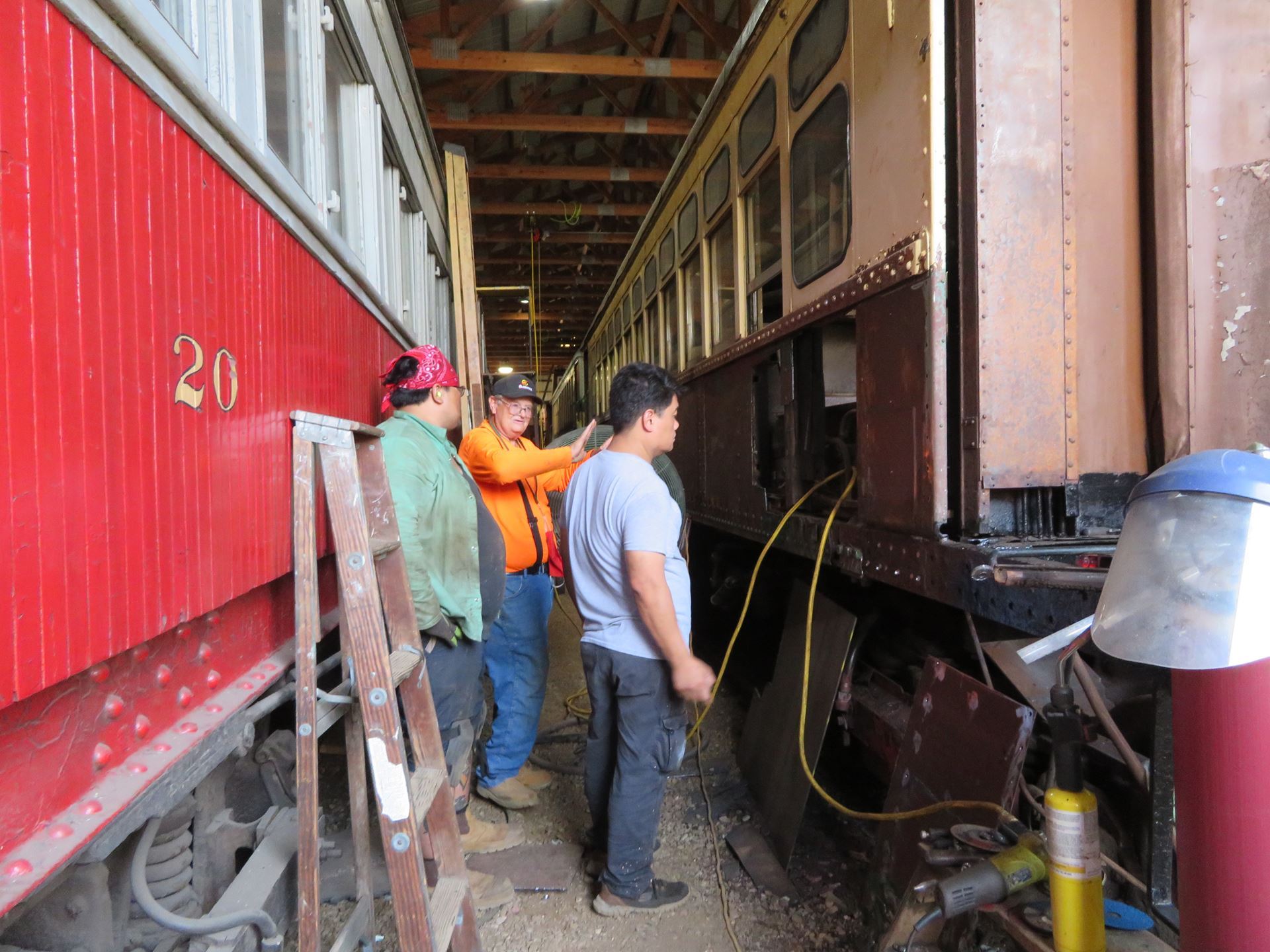
Here Fred Lonnes is explaining about camber to metal technicians John and Thee who have been fabricating and making the repairs to the car body, frame and doors.
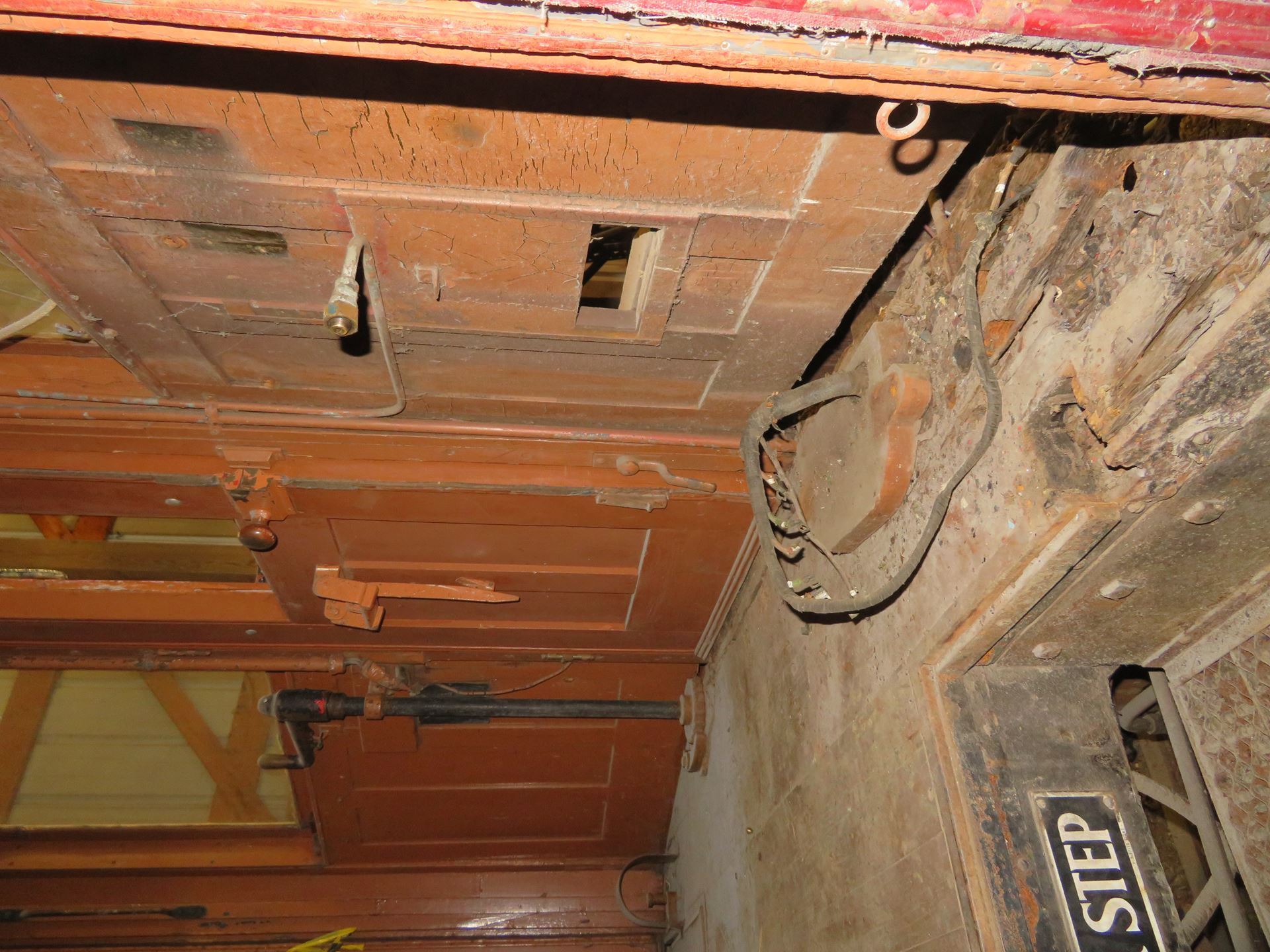
Ralph Taylor has removed the south controller from CA&E 316 as he continues his work to rebuild the end floor.
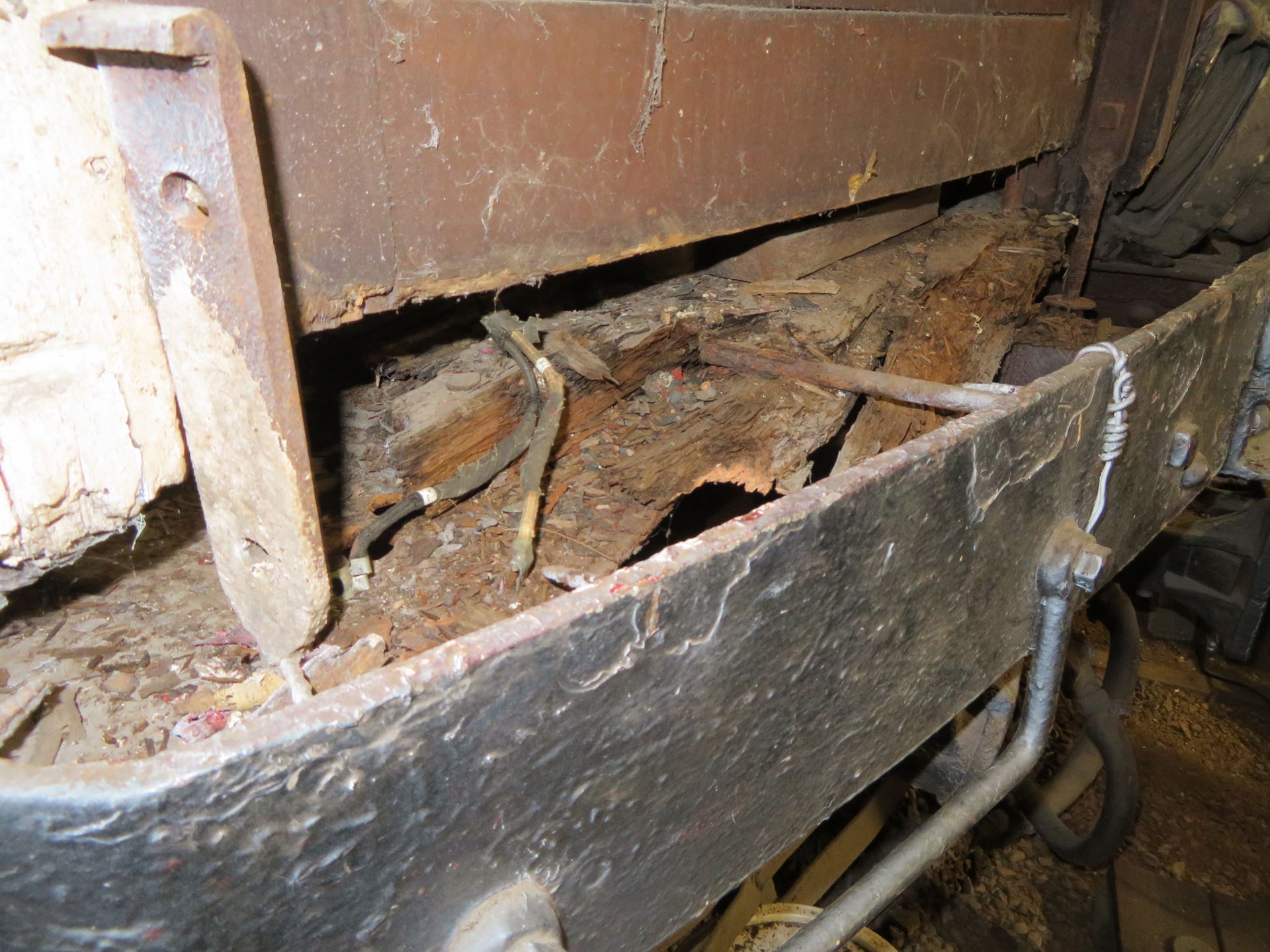
This shows you how much rot has taken place and why this project is so important to car 316.
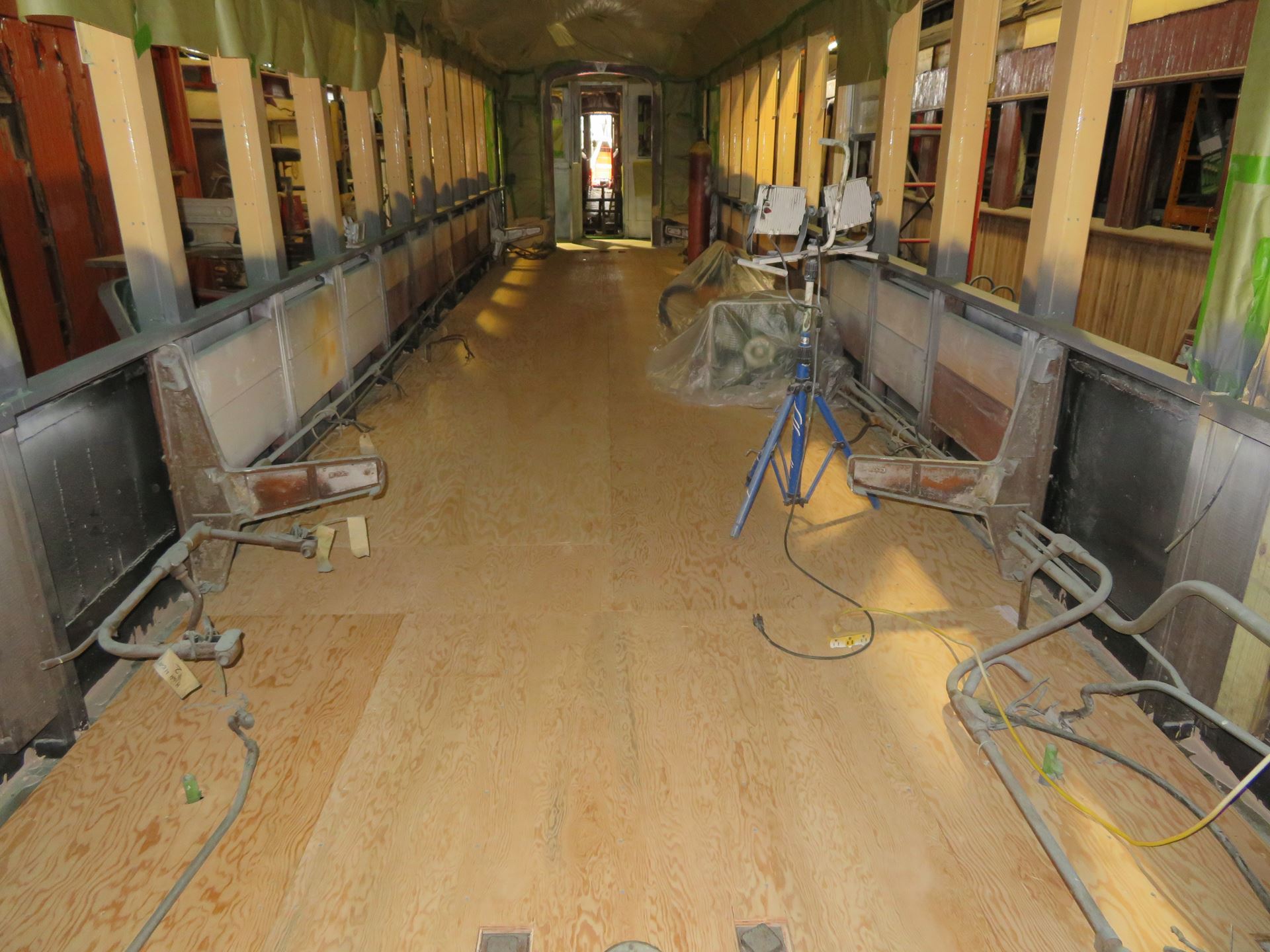
On CTA 4451 Cliff Blanck has laid down the second layer of plywood sub floor through out the car. The next step is to start putting in the hardwood flooring the seats sit on.
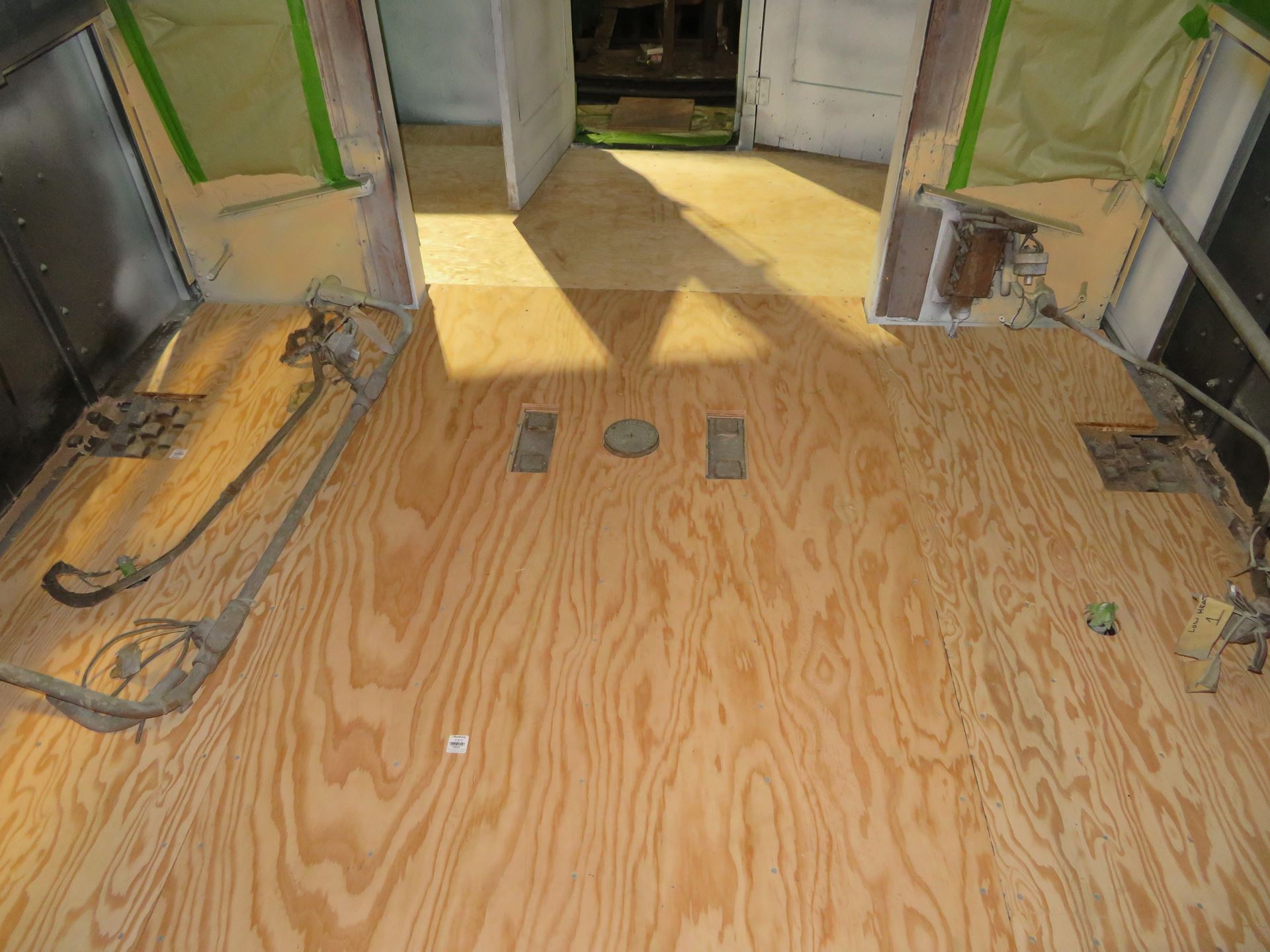
In this view you can see the kingpin cover and large bolt heads associated with the bolster which supports the center bearing of the truck. The final layer of floor will cover the bolts but the kingpin cover will remain visible.
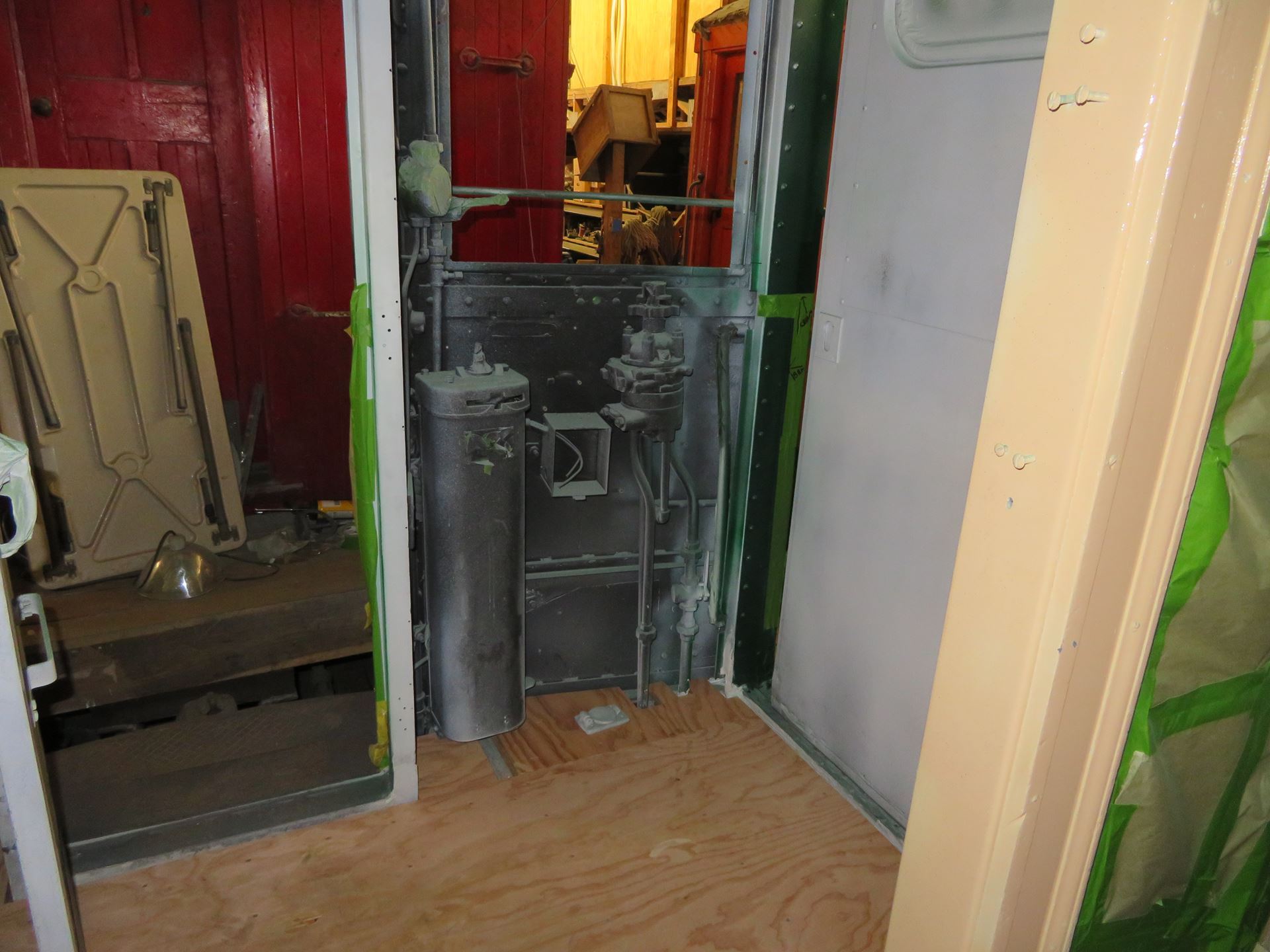
The sub floors are in on both vestibules and here we see the #2 end cab controls back together waiting for the final flooring and then the interior painting.
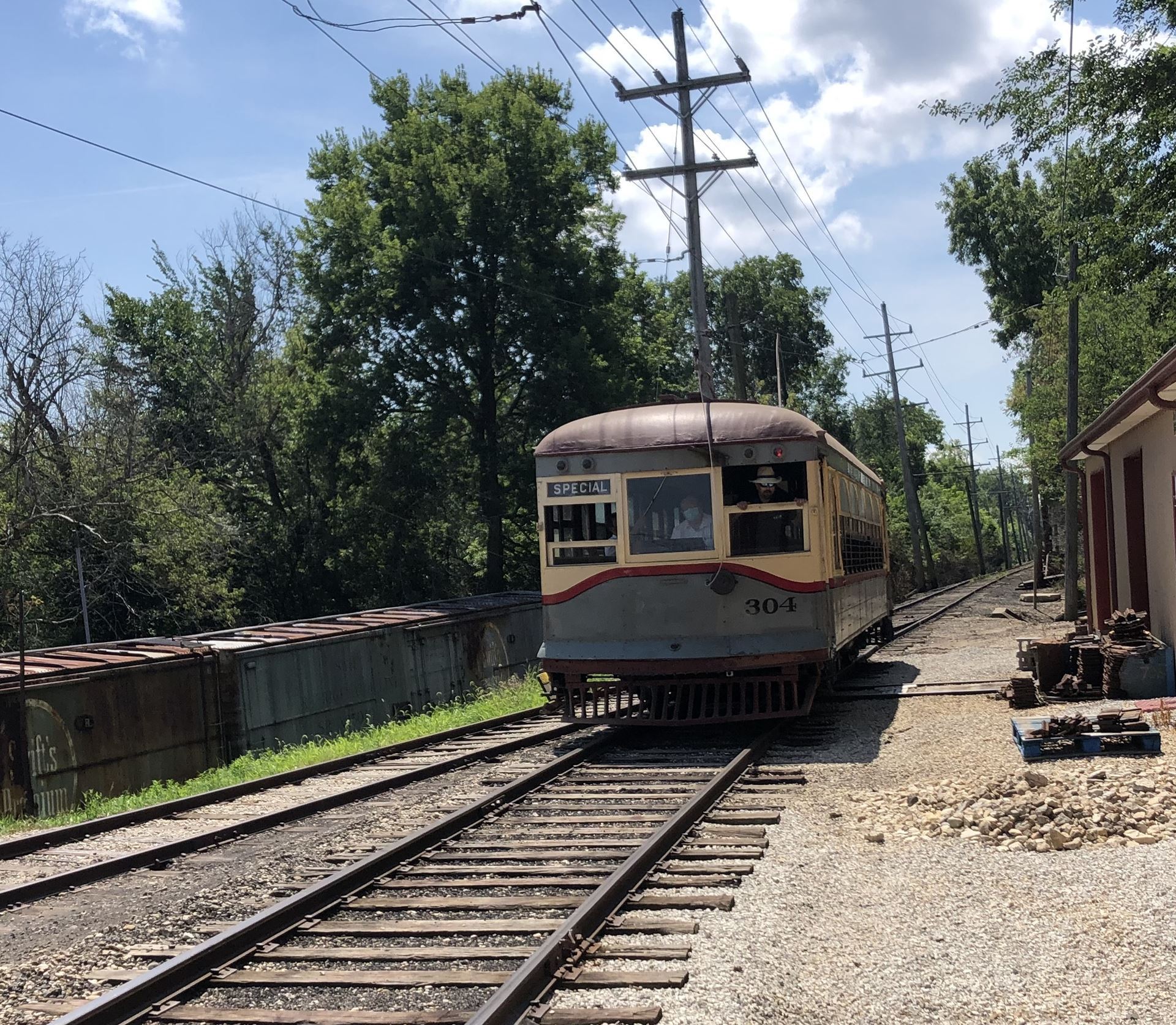
Sunday August 9th saw the first operation of AE&FR 304 this season. This was made possible in part by moving CA&E 317 from Track 4 in front of the barn to Track 0 so CA&E 458 could be moved from Track 3 to Track 4 and thus finally enabling 304 to make it out of the barn. Mike Gilles photo

